Hi, dear flight-report members and readers!
In this FR I'd like to present a detailed review of now-long-gone Boeing 767-300ER of LATAM Brasil on longhaul flight from Sao Paulo Guarulhos (GRU) to Milan Malpensa (MXP), taken on 18-19 March 2017.
This time was the heyday of the LATAM's fleet diversity with its Brazilian branch (JJ, former TAM) having B77Ws, A359s and (mostly) young B763s in the fleet (including 2013-builds - some of the last 767 pax built) and the Chilean branch (LA, former LAN) having B789s, B788s and (older) B763 (operating for LATAM Peru and LATAM Ecuador). This flight was the final leg of my JJ ticket MXP-GRU-SCL-GRU-MXP, which (with the first damping segment MEX-CUN, which I flew in Mexico in late November 2016) costed me phenomenal 220 EUR! The MXP-GRU flight was operated by A359, the GRU-SCL - by B77W and the return SCL-GRU-MXP - by two B763s.
During the pandemic LATAM went through Chapter 11 restructurization and had to shed off A359s (which went to Delta and to Edelweiss Air) and Brazilian B763s (which were sold for freighter conversions), whereas older Chilean B763 (based in Peru) remained in the fleet and got new business cabins. Instead of phased-out A359s and B763s, some Chilean B789 were transferred to GRU.
Honestly, I don't completely get this move, when LA sells younger B763 with much better cabins for conversion while retaining and refurbishing older B763. For me, it would be better to sell older LA B763s and transfer newer JJ B763s to Peru. But, on the other side, this move can be understood: production of factory-new B763Fs ends in 2027 (because old-tech GE CF6 engines cannot comply new ecological norms) and cargo airlines want to get GE-powered ex-passenger frames with as much life left in them as possible for conversions. And, as LA will get more new B789s, older B788s will be moved to Peru and remaining B763s will be phased out.
Boeing 767 Operators
Boeing 767 is a rapidly dying widebody family. Being the narrowest widebody in aviation history with 7-abreast economy on the passenger deck and LD2 containers (smaller than standard LD3) on the cargo deck, it represents extremely inefficient design for today's standards. B767s falls right into so-called "gorge of inefficiencies", and airlines replace them with A21Ns from the lower side and with B789 or A339 from the upper side (there are formally also B788s and A338s, but they are non-sellers). So, there is a significant gap, which cannot be completely covered with today's technologies. It will be partially covered from the lower side, because both Airbus and Boeing plans to develop large narrowbodies, longer than A21N and with larger wings, covering the market which was previously covered by almost exctinct B757s. In 1980s, when B767 family was introduced, these gorge was not pain in the ass for the airlines, because the market was completely different and allowed high variety of airliners families.
Worth to note that B762 and B763s were produced with the choice of 3 engine types: GE CF6, PW4000 and RR RB211. There very few RR-powered 767s left, and GE-powered 767s are significantly more popular than PW-powered.
B763 is the only widebody type which could have optional winglets (factory or retrofitted).
B764s, which had taller gear and raked wingtips and inherited "glass cockpit", windows and interior from B777, were produced only with GE CF6 engines.
It would be interesting to list remaining B767 regular passenger operators and they layouts. Currently there are 17 B763 passenger operators, just 2 B762 operators and just 2 B764 operators.
B767-200ER:
1) Air Zimbabwe: 1 PW-powered unit in 2-class layout (C28_Y175, 2-3-2 Y) plus 1 PW-powered unit with 2-class layout (C30_Y173, 2-3-2 Y).
2) UTair Aviation: 3 GE-powered units in single-class layout (Y249, 2-4-2 Y).
B767-300ER:
1) Air Astana: 3 PW-powered units in 2-class layout (C30_Y193, 2-3-2 Y). These are the very last passenger 767s built. Will be phased out in 2026.
2) Air Do: 4 GE-powered units in single-class layout (Y288, 2-3-2 Y).
3) Air Niugini: 2 GE-powered units in 2-class layout (C28_Y160, 2-3-2 Y).
4) ANA: 9 GE-powered units in 2-class layout (C10_Y260, 2-3-2 Y) plus 6 GE-powered units in 2-class layout (C35_Y167, 2-3-2 Y).
5) Austrian Airlines: 3 PW-powered units in 3-class layout (C24_W30_Y157, 2-3-2 Y). Will be phased out by the end of 2025.
6) Azerbaijan Airlines: 2 GE-powered units in 2-class layout (C22_Y176, 2-3-2 Y).
7) Azur Air: 4 PW-powered units in single-class layout (Y336, 2-4-2 Y) plus 2 GE-powered units in single-class layout (Y336, 2-4-2 Y) - the most dense B767s in the world.
8) Delta Air Lines: 18 PW-powered units in 3-class layout (C26_W18_Y172, 2-3-2 Y) plus 14 GE-powered units in 3-class layout (C26_W18_Y172, 2-3-2 Y) plus 6 PW-powered units in 2-class layout (C36_Y175, 2-3-2 Y).
9) Eastern Airlines: 4 RR-powered units in 2-class layout (W30_Y214, 2-3-2 Y).
10) EuroAtlantic Airways: 2 PW-powered units in single-class layout (Y267, 2-3-2 Y) plus 1 PW-powered unit in single-class layout (Y309, 2-4-2 Y).
11) Icelandair: 3 GE-powered units in 2-class layout (C25_Y237, 2-3-2 Y).
12) Japan Airlines: 9 GE-powered units in 3-class layout (C5_W42_Y205, 2-3-2Y, C marketed as "F", W marketed as "C") plus 7 GE-powered units in 2-class layout (W42_Y219, 2-3-2 Y, W marketed as "C") plus 8 GE-powered units in 2-class layout (C24_Y175, 2-3-2 Y).
13) LATAM Chile (operated for LATAM Peru): 4 GE-powered units in 2-class layout (C20_Y213 , 2-3-2 Y) plus 4 GE-powered units in 2-class layout (C20_Y211 , 2-3-2 Y) plus 4 1 GE-powered unit in 2-class layout (C20_Y218 , 2-3-2 Y).
14) MIAT Mongolian Airlines: 1 GE-powered unit in 2-class layout (C15_Y237, 2-3-2 Y).
15) Sunday Airlines: 1 GE-powered unit in 2-class layout (C12_Y278, 2-3-2 Y).
16) United Airlines: 24 PW-powered units in 3-class layout (C46_W22_Y99, 2-3-2 Y) plus 13 PW-powered units in 3-class layout (C30_W24_Y149, 2-3-2 Y).
17) Uzbekistan Airways: 4 PW-powered units in 2-class layout (C15_Y232, 2-3-2 Y) plus 2 PW-powered units in 2-class layout (C18_Y246, 2-3-2 Y). HY B763 fleet is the second-youngest in the world after Air Astana fleet.
Boeing 767-400ER:
1) Delta Air Lines: 21 units in 3-class layout (C34_W20_Y184, 2-3-2 Y).
2) United Airlines: 16 units in 3-class layout (C34_W24_Y173, 2-3-2 Y).
As one can see, Delta is the world's largest B767 operator with United being the second-largest. You can fly B764 only if you're eligible to enter US (not my case).
Sao Paulo Guarulhos Airport (GRU)
Sao Paulo Guarulhos is currently the most busies airport in all the Latin America. It has 3 terminals: a small T1 for domestic flights of airlines with small presence in GRU, an outdated T2, which is in dire need for renovation, and an excellent modern and airy T3, built in 2014 and having one of the best spotting possibilities in the world. GRU is connected by trainline with extensive Sao Paulo metro network.
The Aircraft
The flight was operated by 2013-built PT-MOE - one of the last passengers B763s built, powered by GE CF6-80 engines and having winglets. In 2021 it was sold to DHL Aviation and converted to freighter. Boarding was via bus gate.
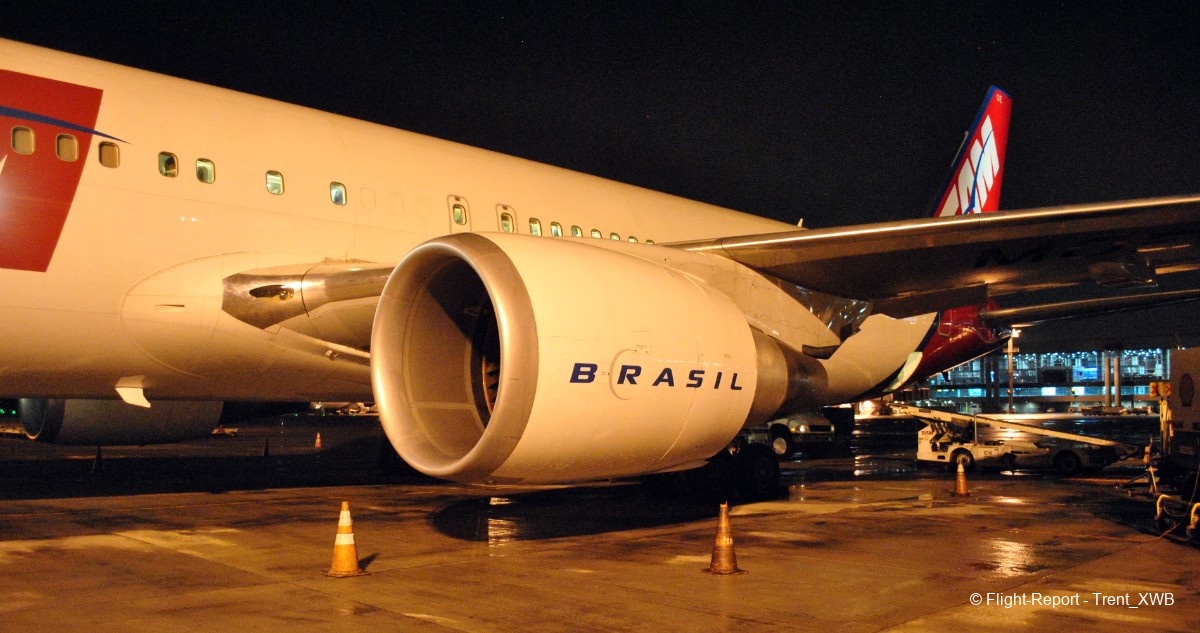
The Business Class Cabin
The business cabin had 30 lie-flat seats in 2-2-2 layout (quite tight for 767 cabin width, some airlines had more spacious 2-1-2 or even 1-2-1 layouts).
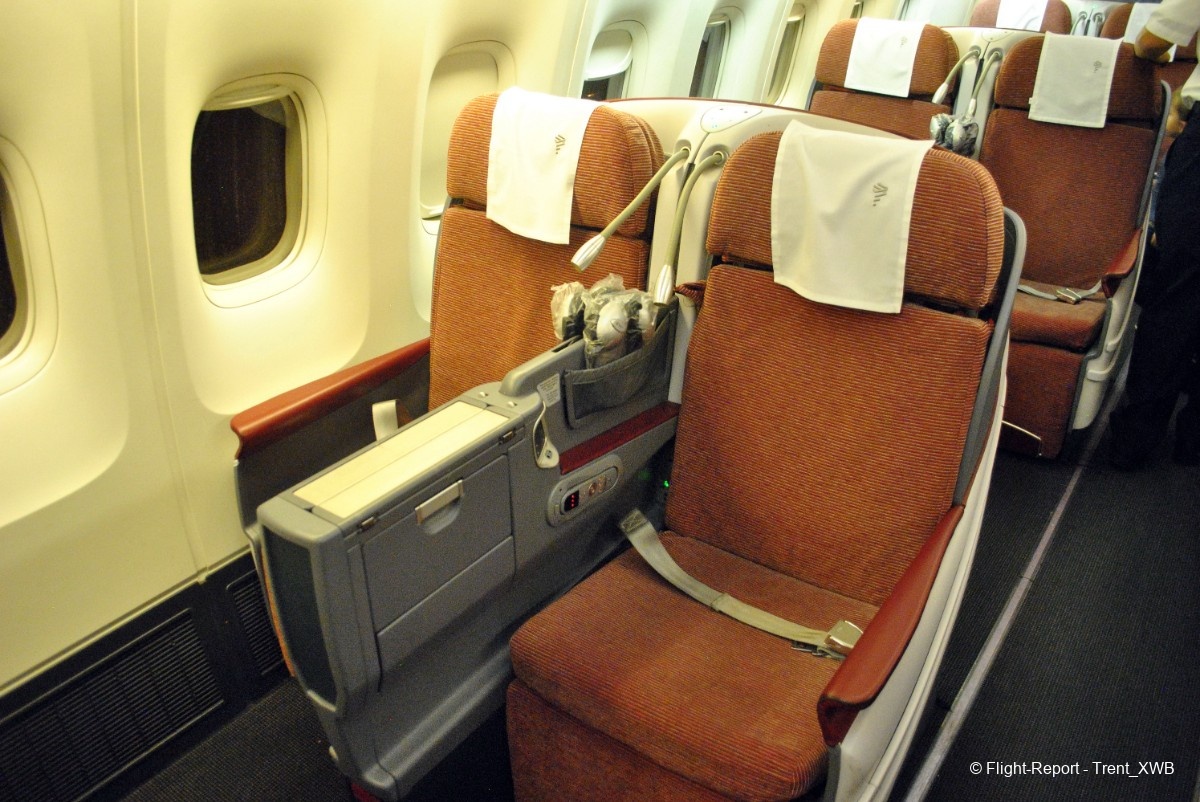
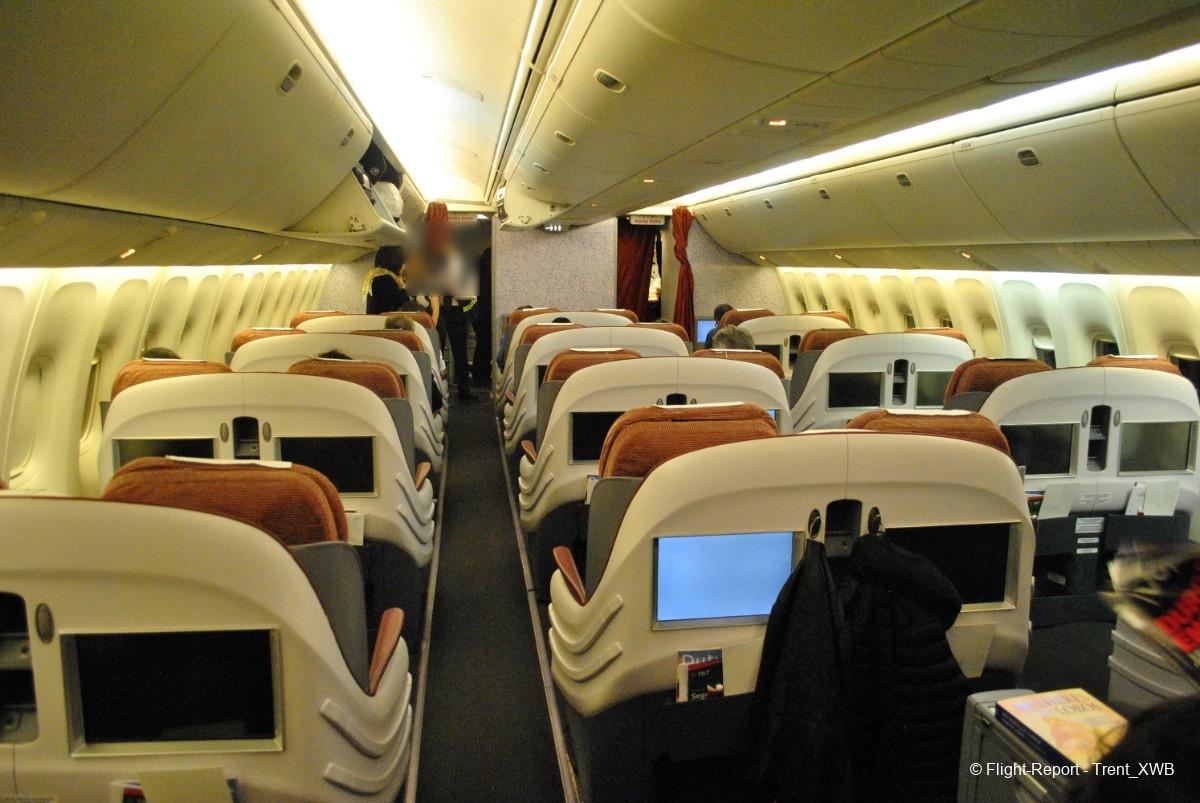
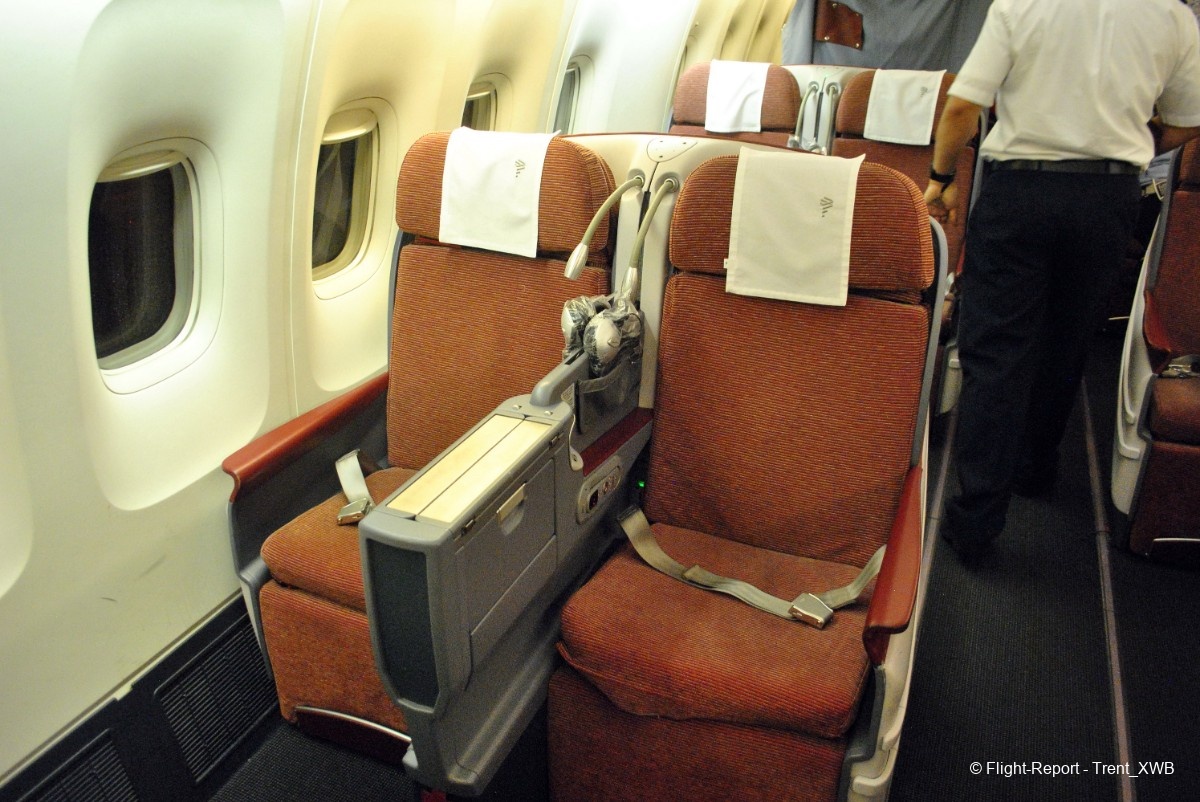
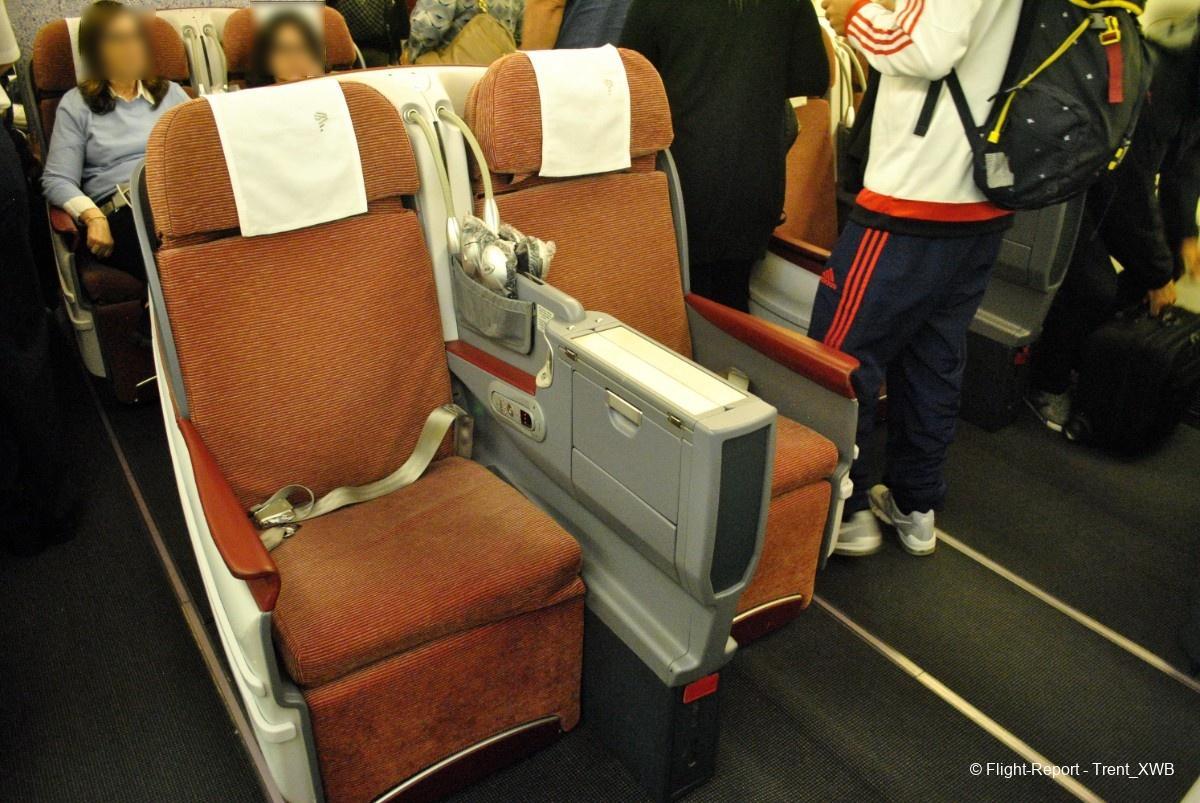
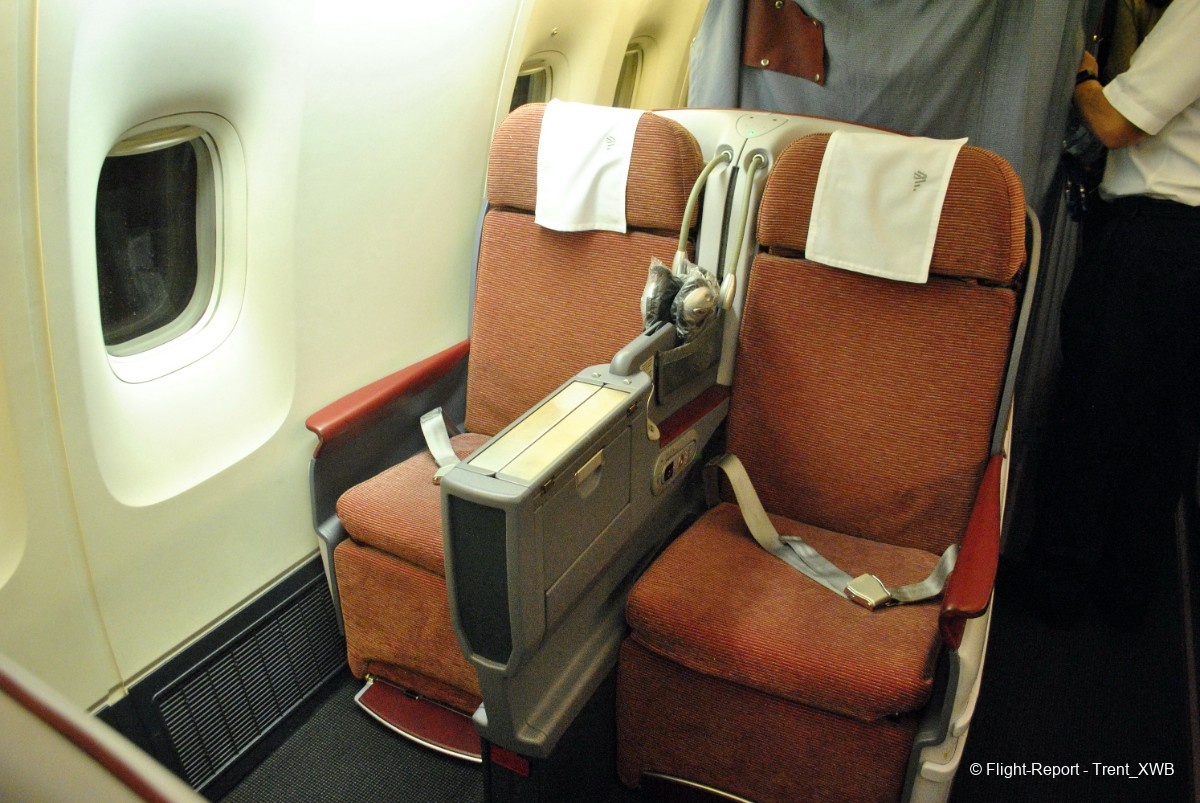
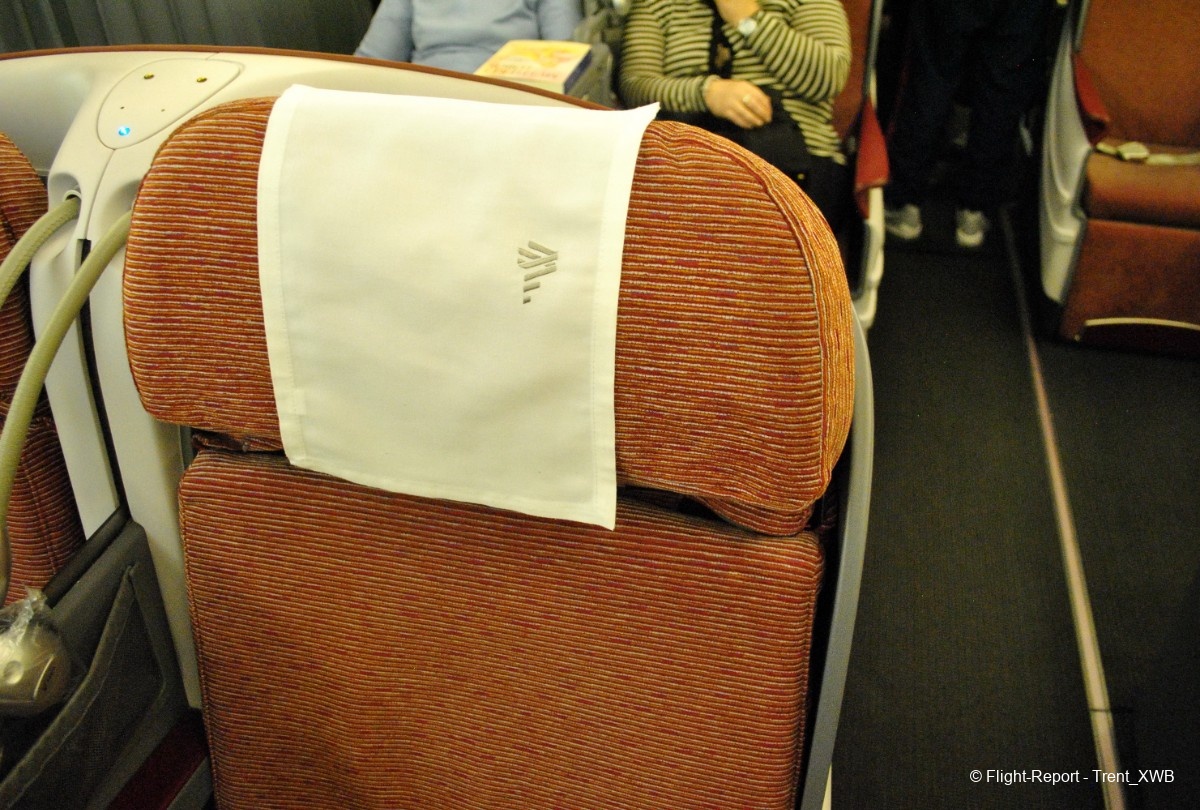
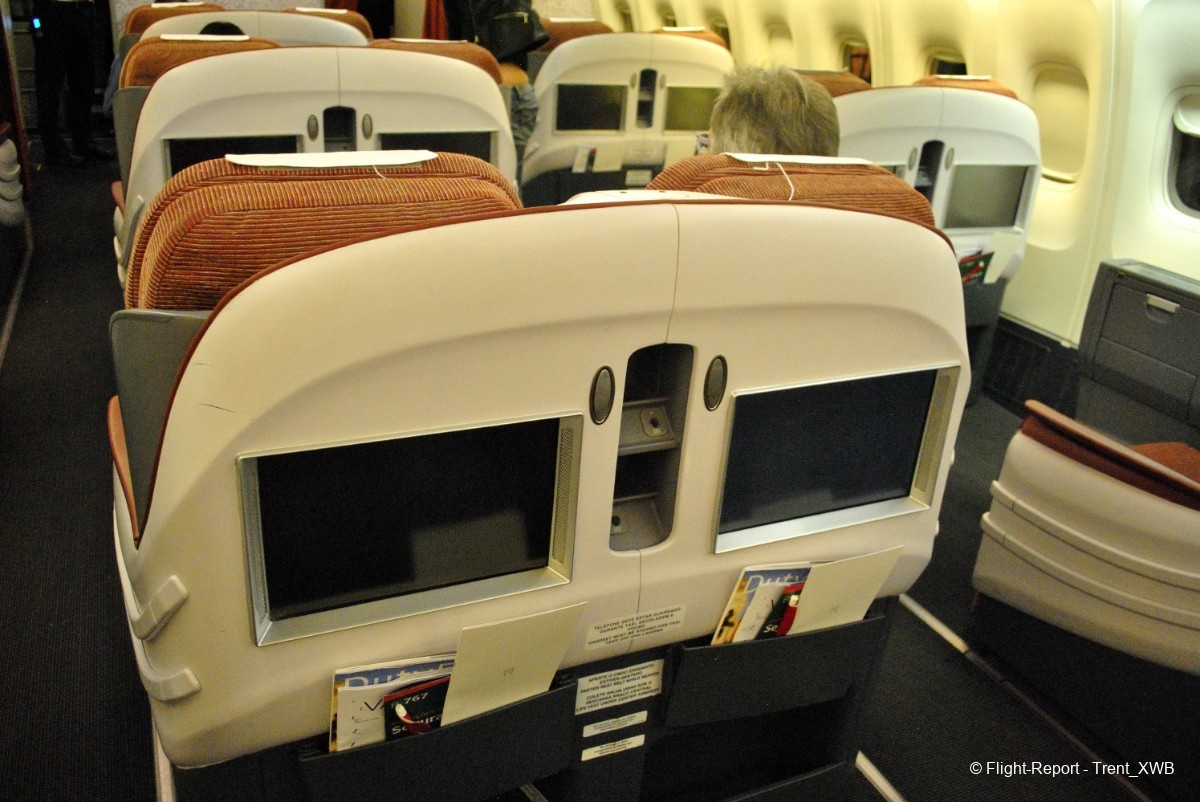
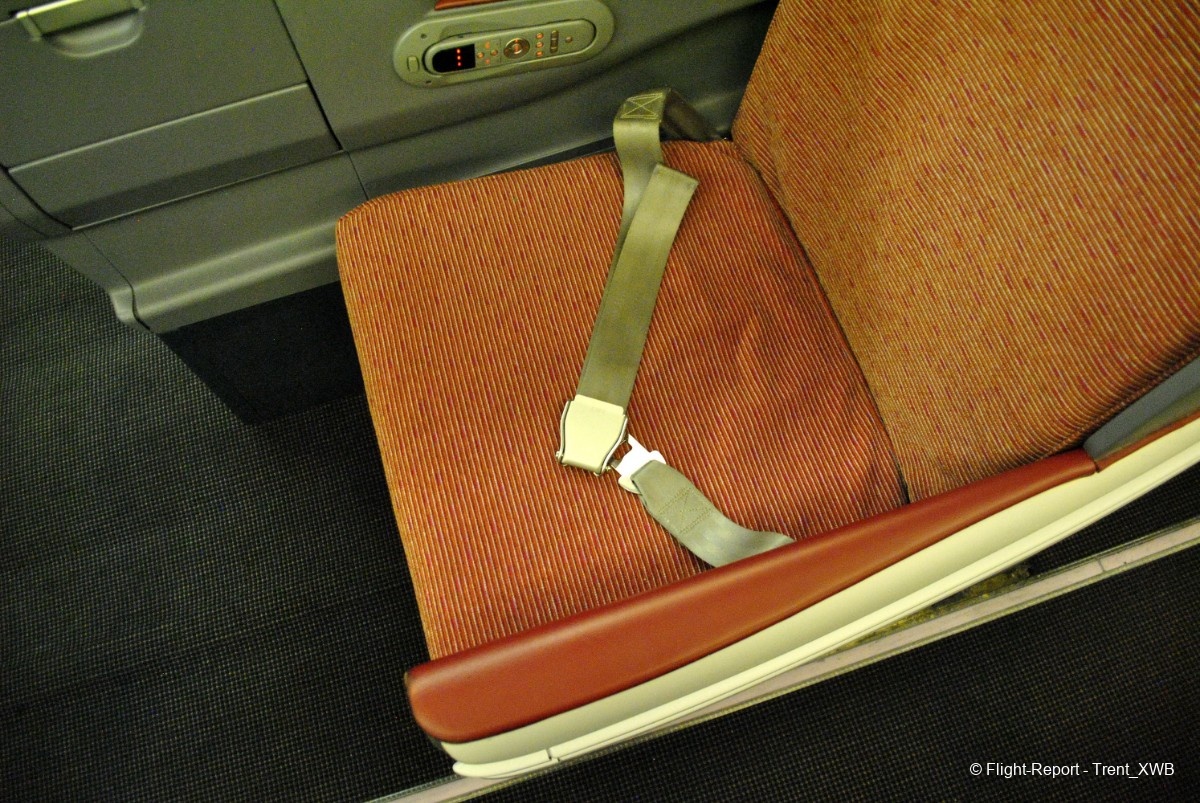
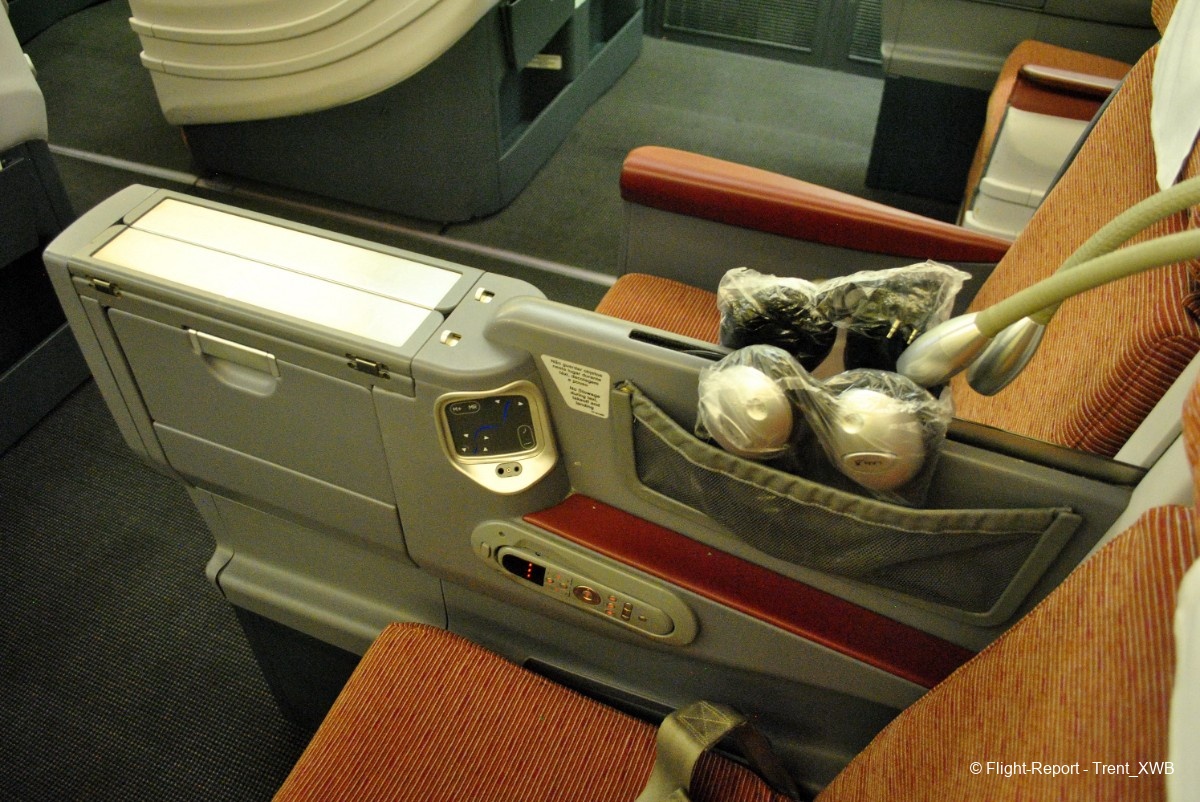
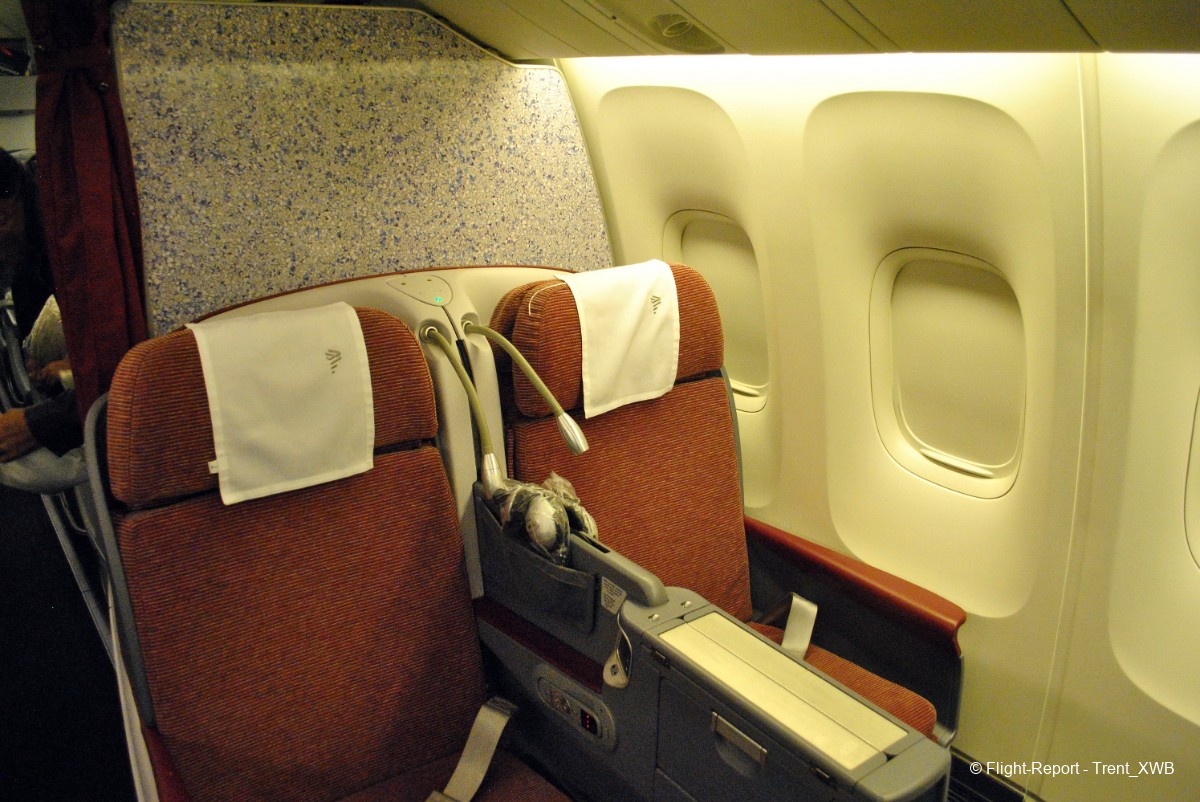
The Economy Cabin
The economy cabin constisted of 191 seats in comfortable 2-3-2 layout (with just 1 middle seat per row). It will be shown in details further. At the very back of the cabin there were crew rest seats (B763 don't have crew rest bunks), shown on the last photo in this gallery.
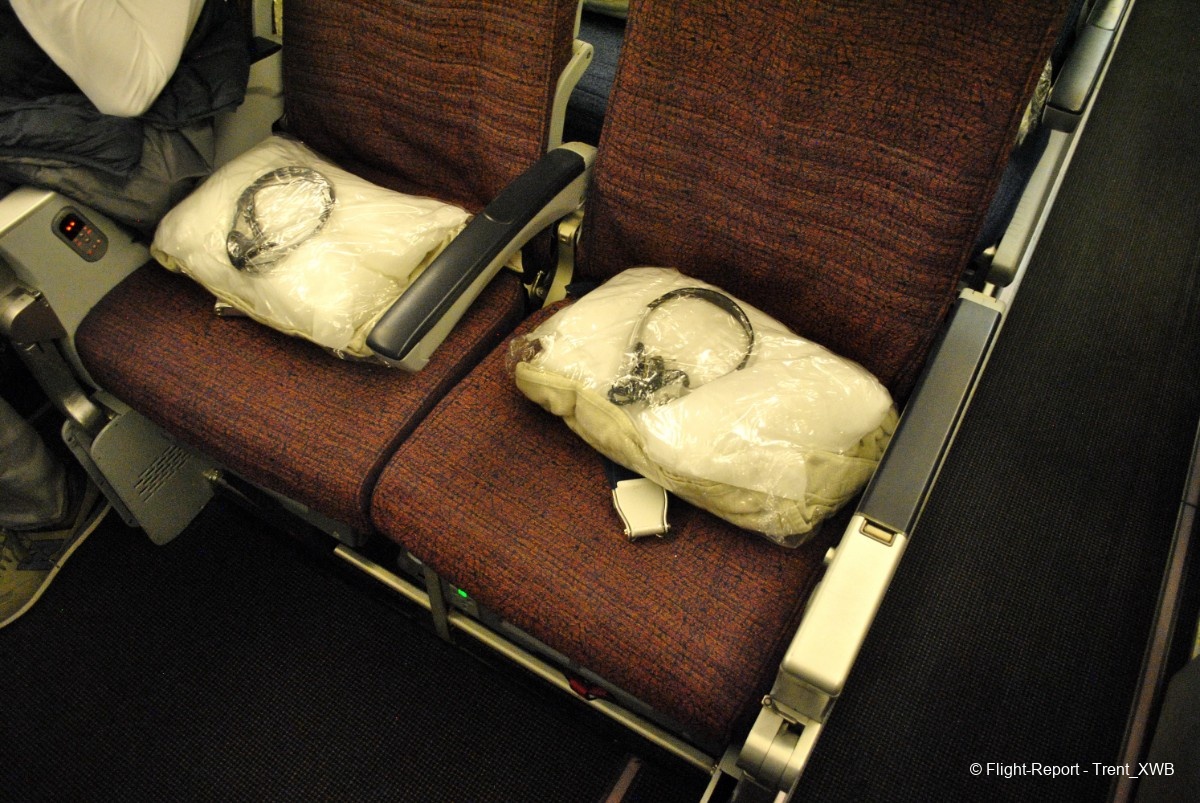
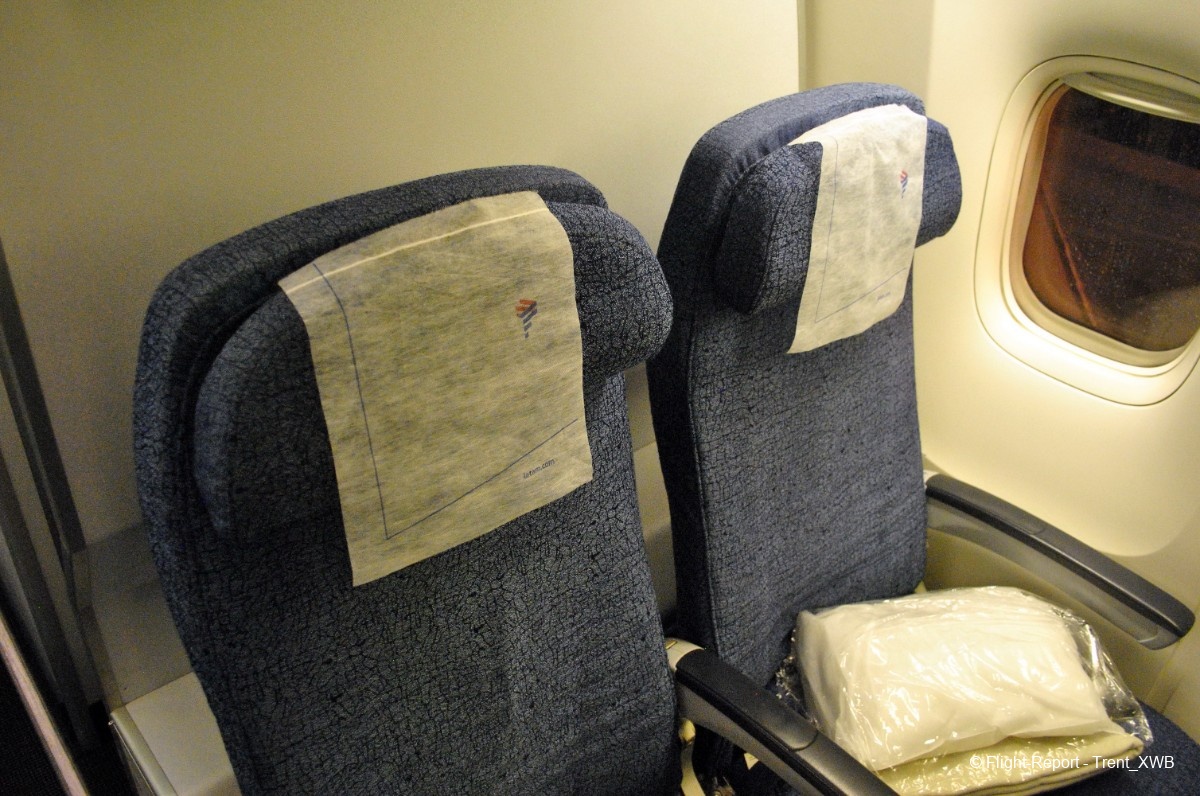
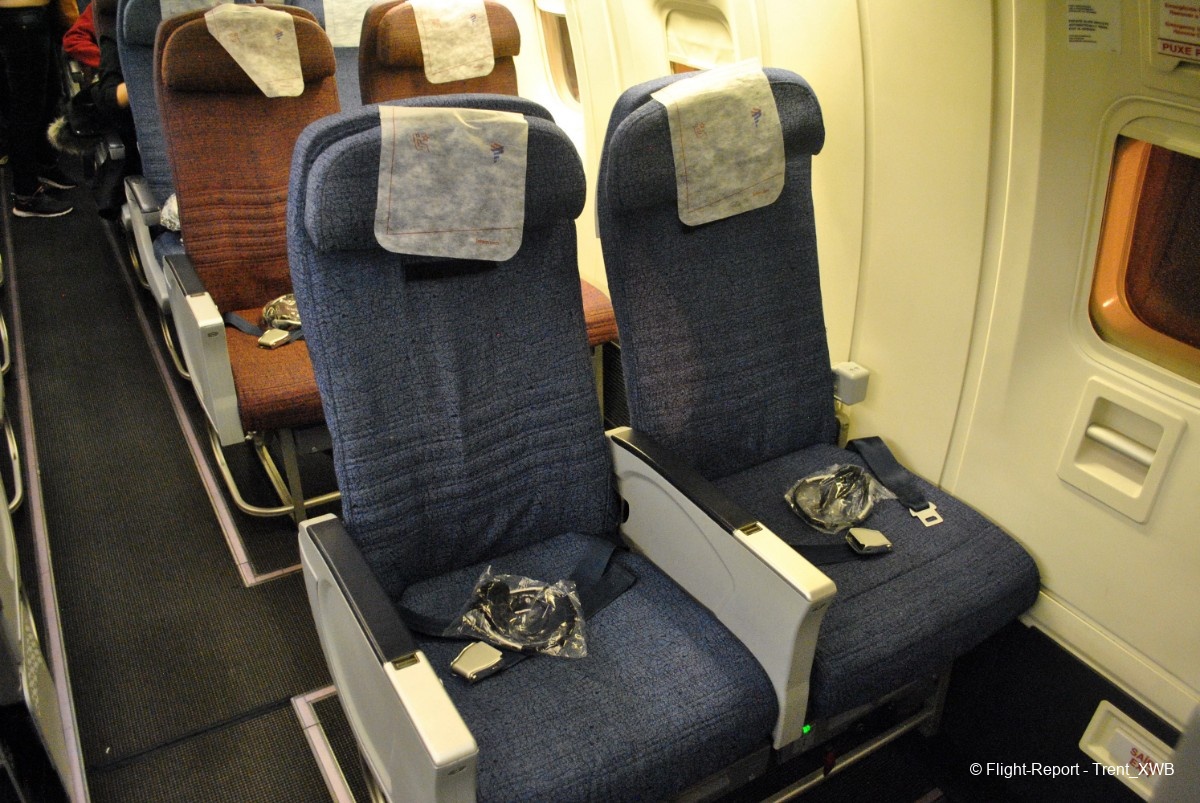
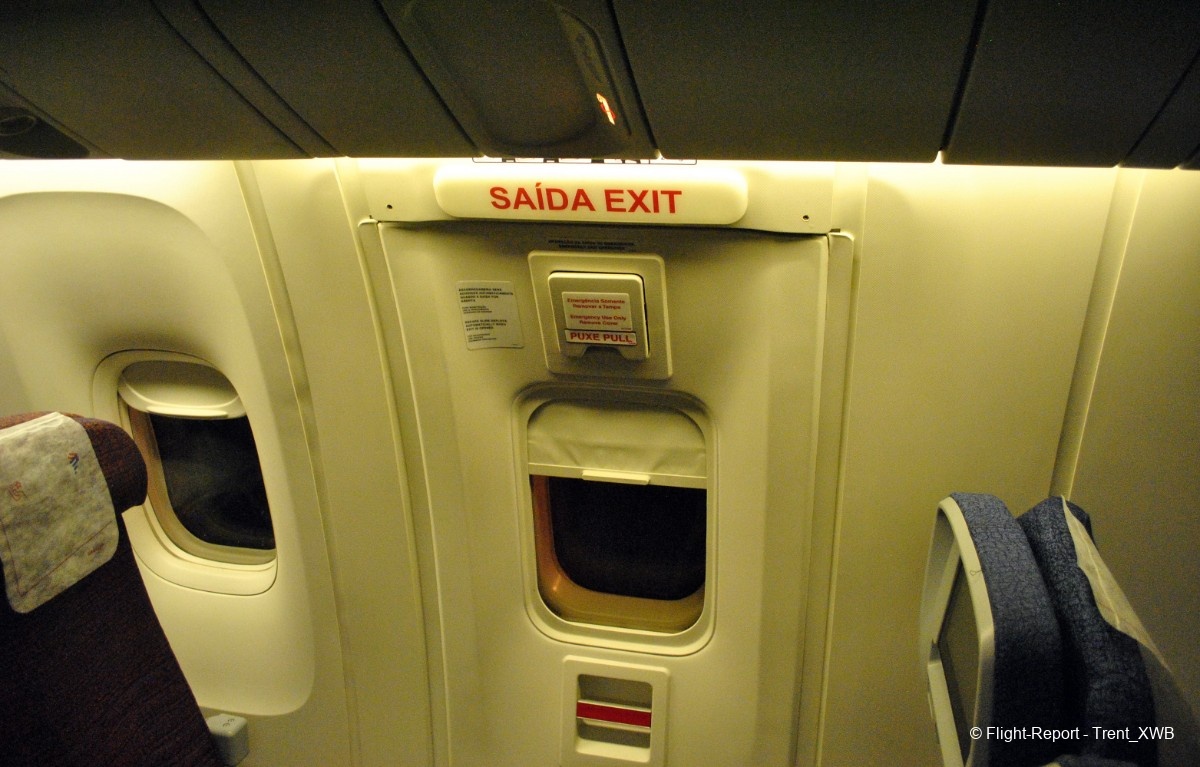
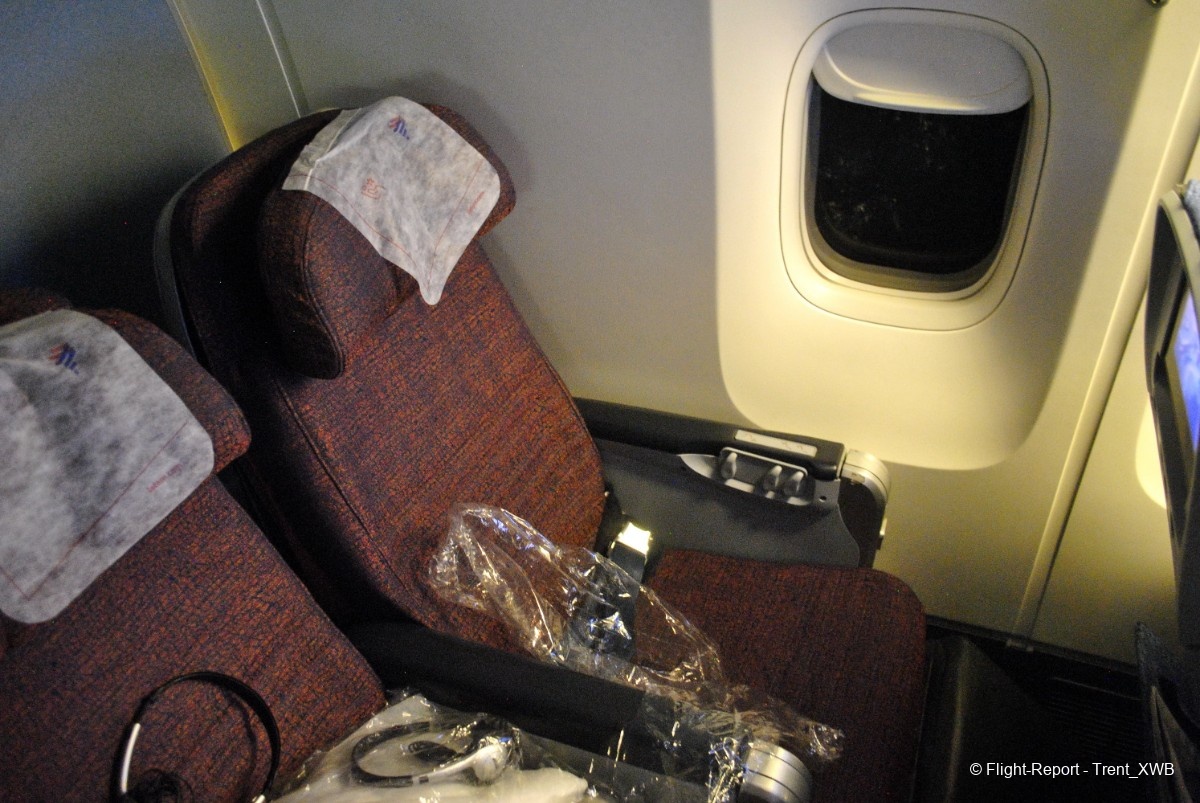
The Economy Seat
My seat was 34A close to the end of the cabin. The seat model is Collins Pinnacle - it's one of the best seats for longhaul flights. I didn't measure the seatwidth, but the seat felt very spacious. I'm almost sure that the width between armrests was 18". 2-3-2 layout with comfortable wide seats is a dream for economy passenger!
The seat had adjustable headrest, quite modern IFE with hard-mounted screen and USB port, tray table with cup holders, seat pocket and universal power socket underseat. Waiting on the seat were pillow, blanket and headset.
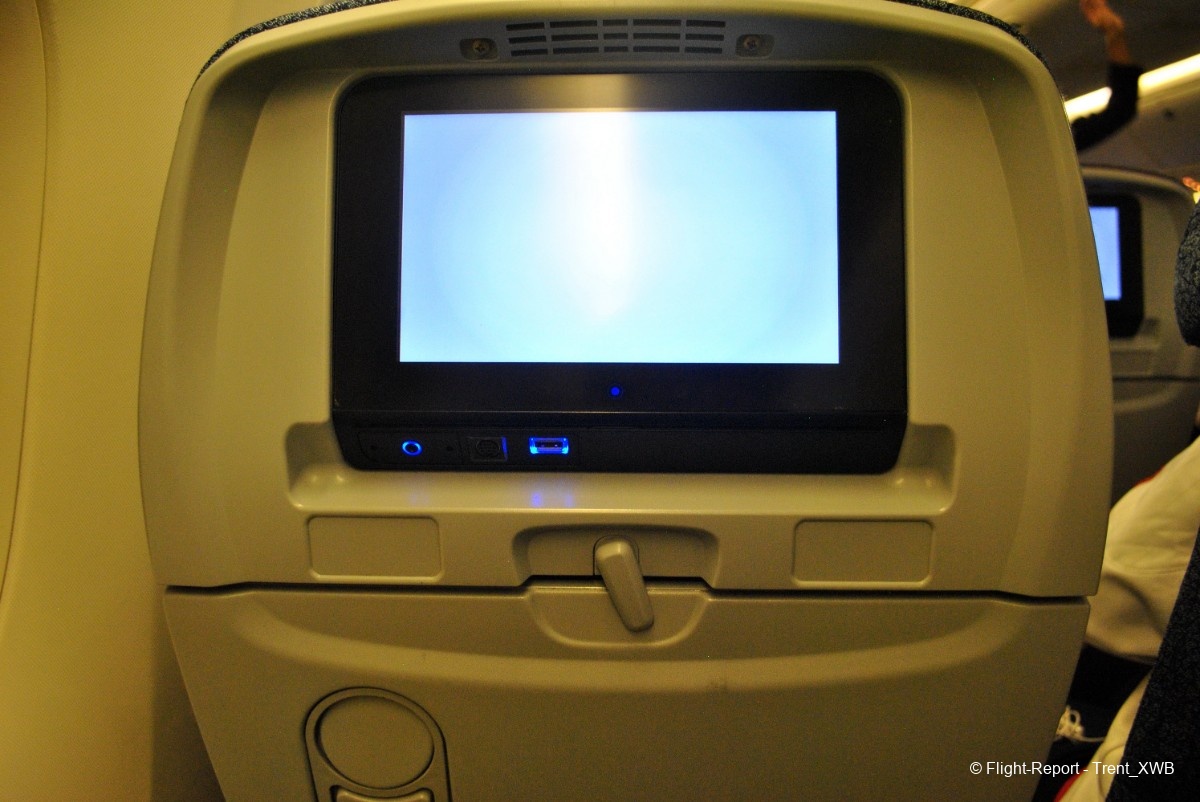
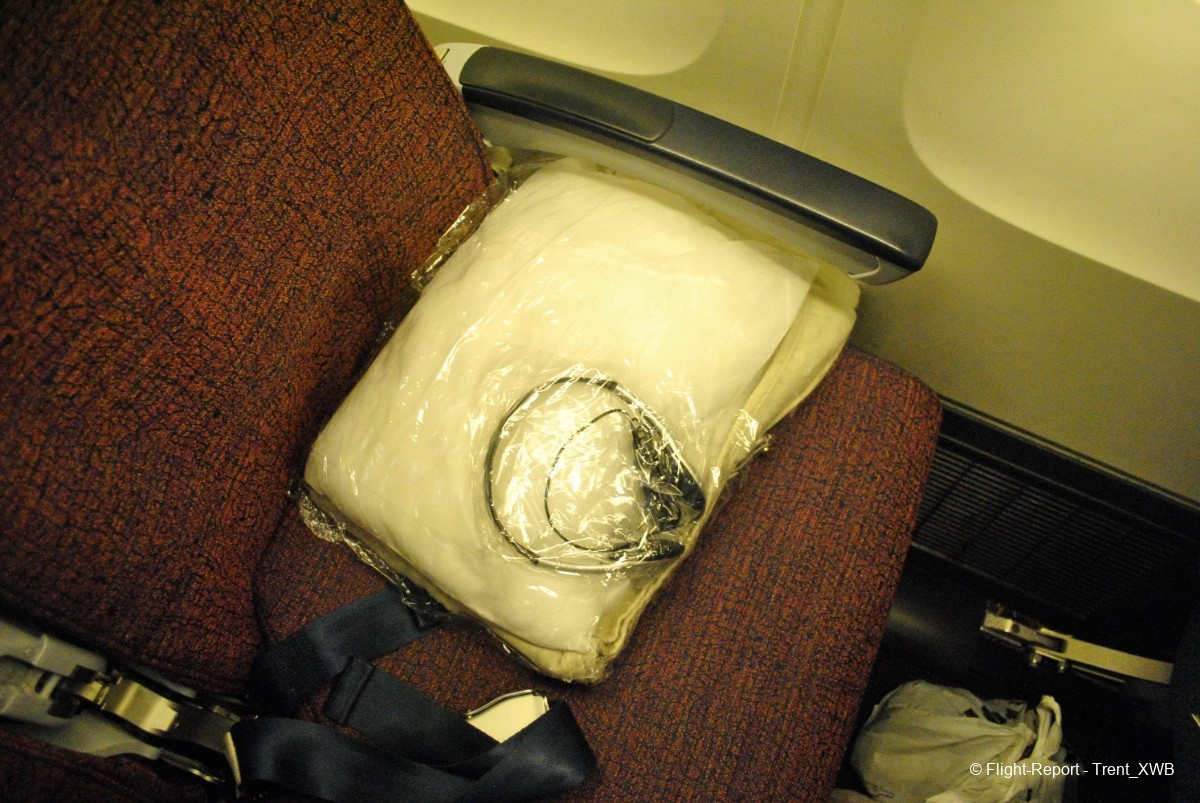
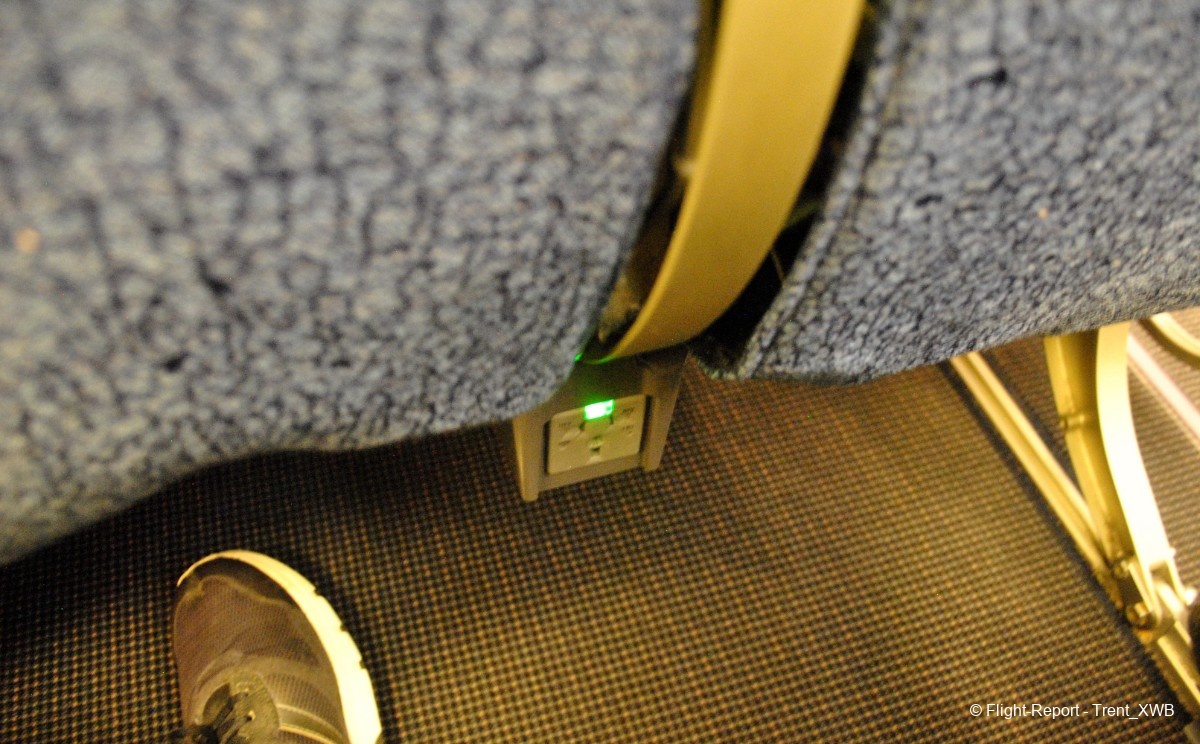
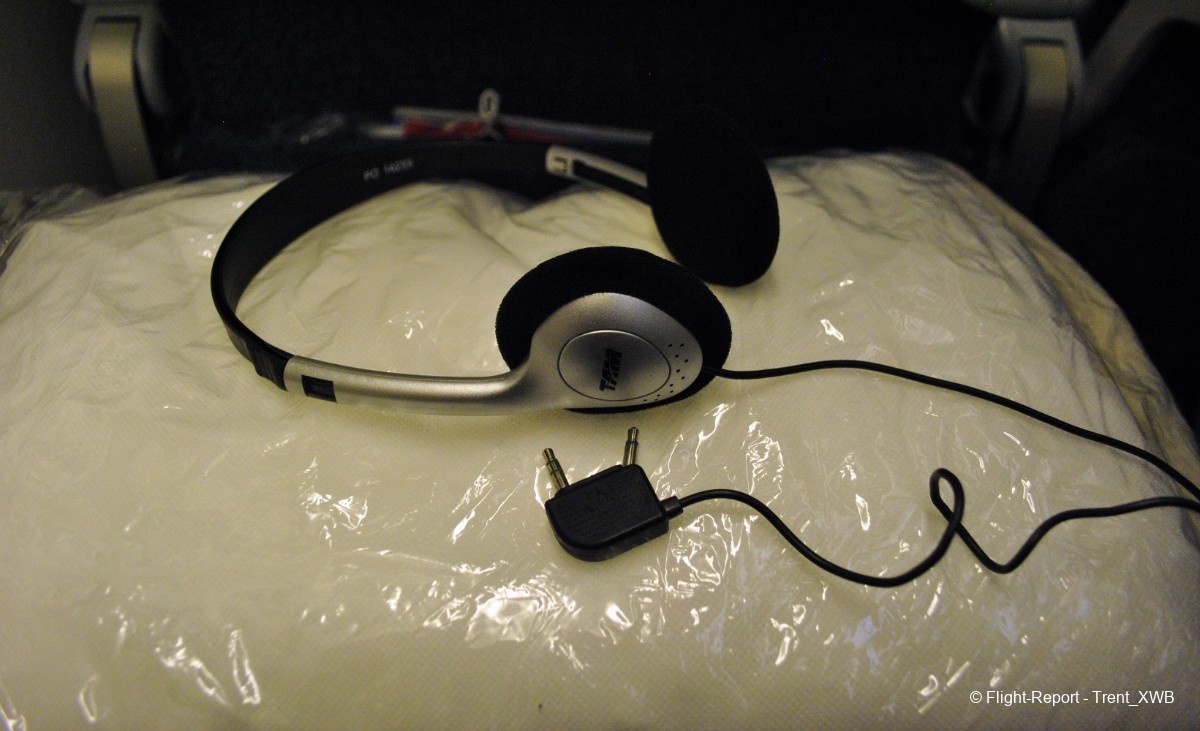
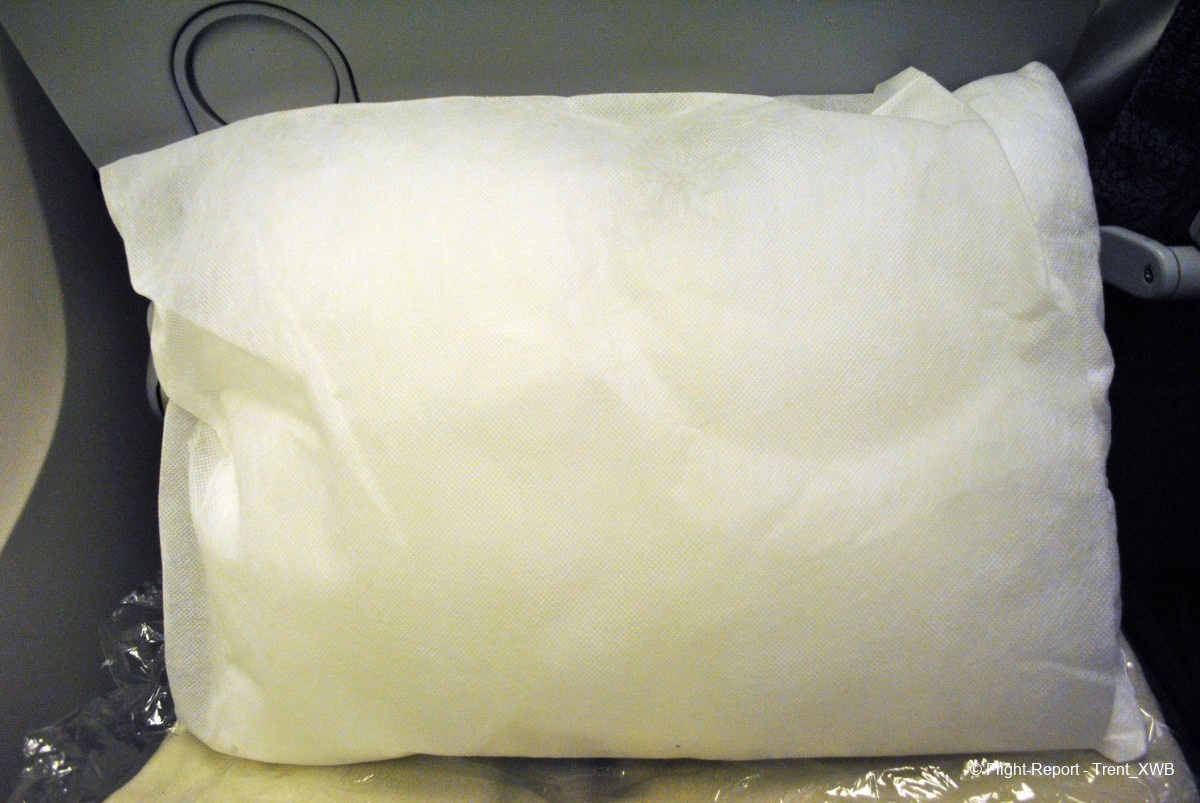
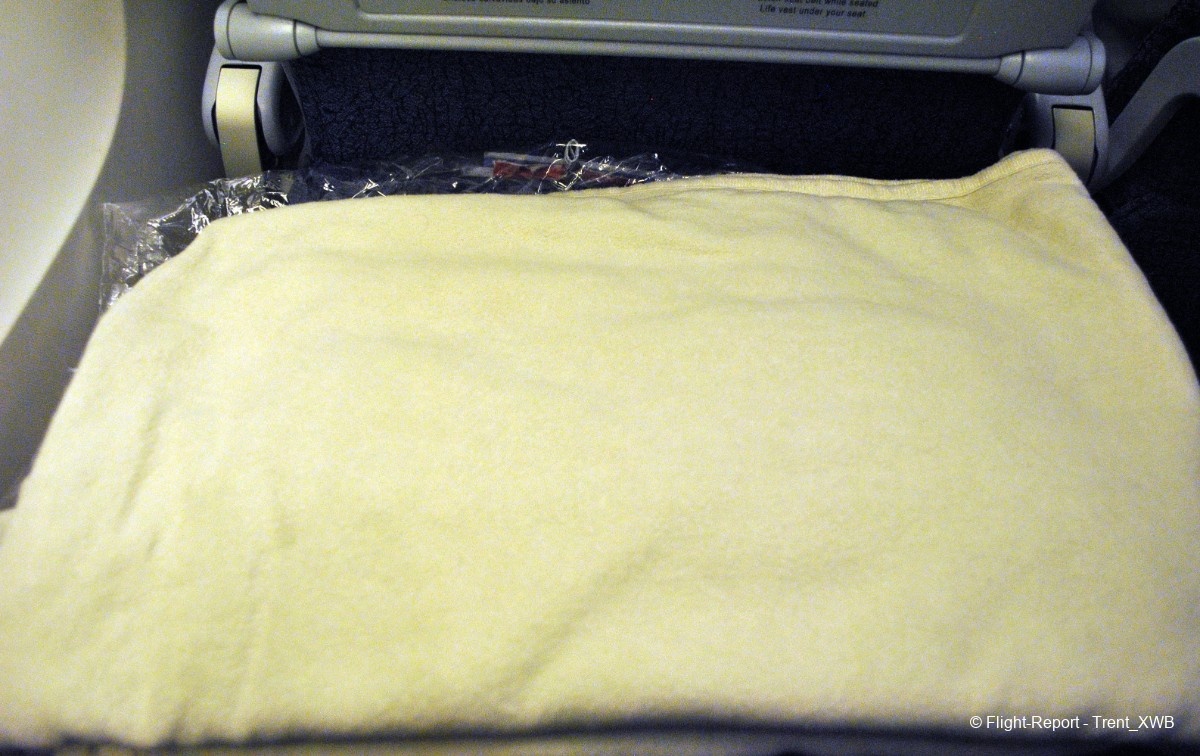
Inside seat pocket were inflight magazine and duty-free magazine.
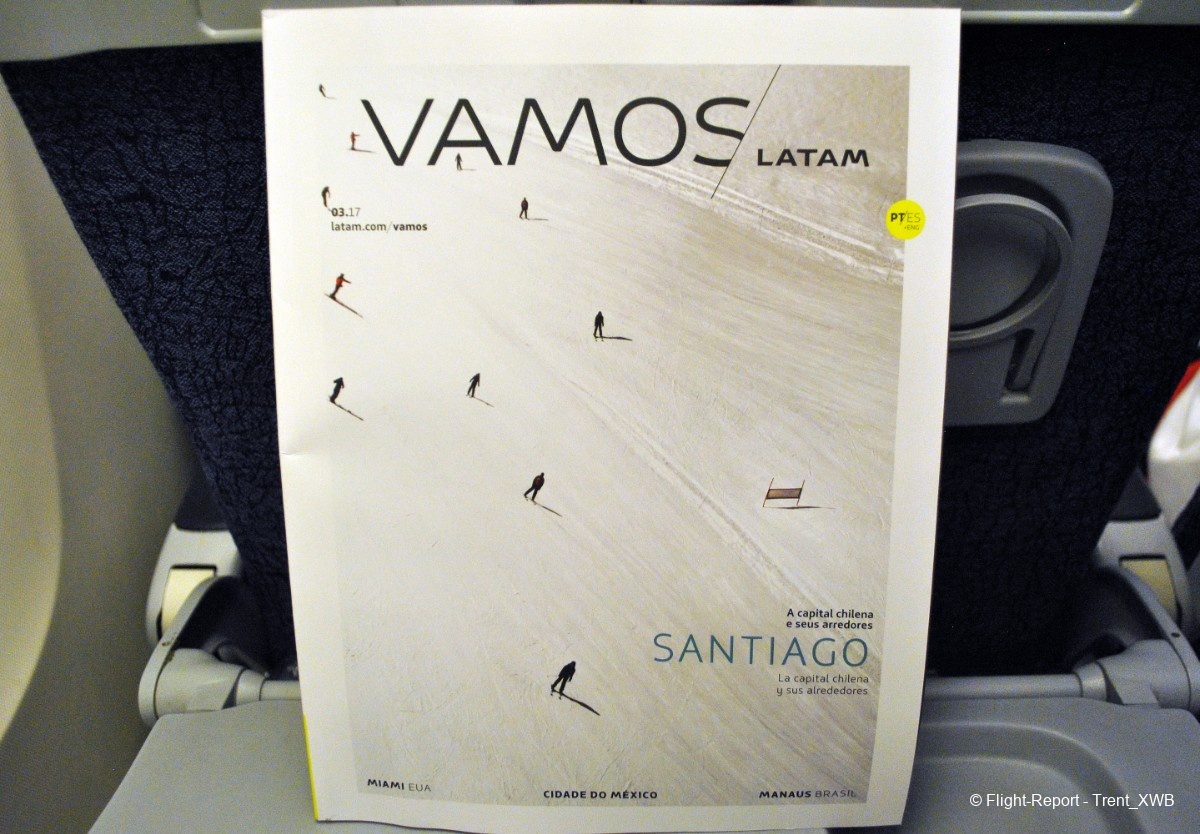
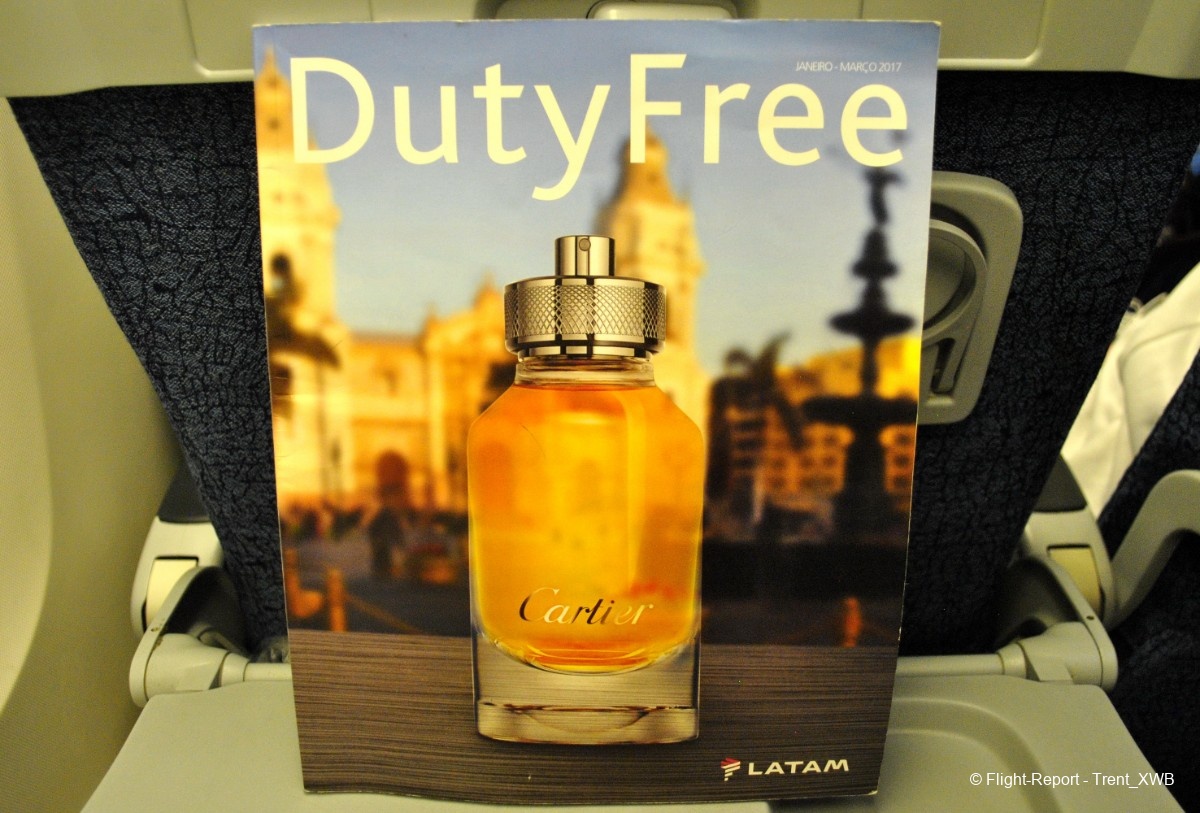
IFE was quite modern by 2017 standards, by obsolete for today's standards.
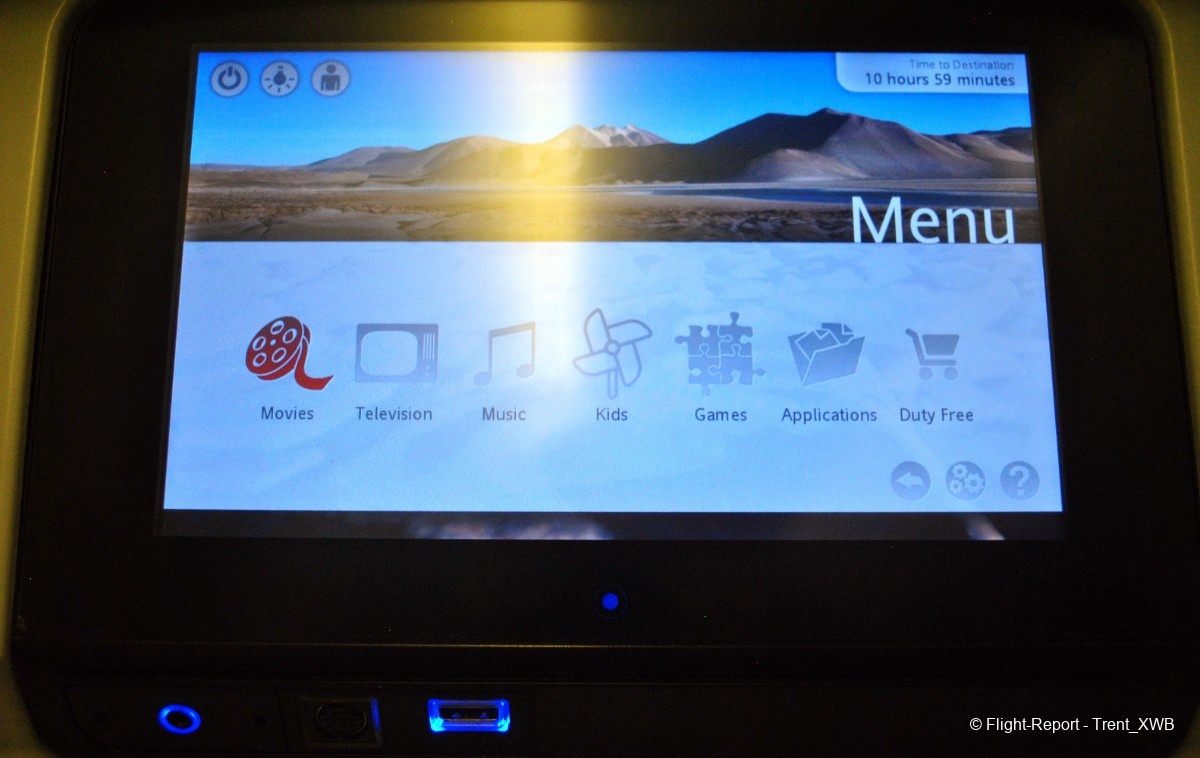
The Flight
The flight took off on time into pitch darkness of the cloudy night.
Cabin view after takeoff.
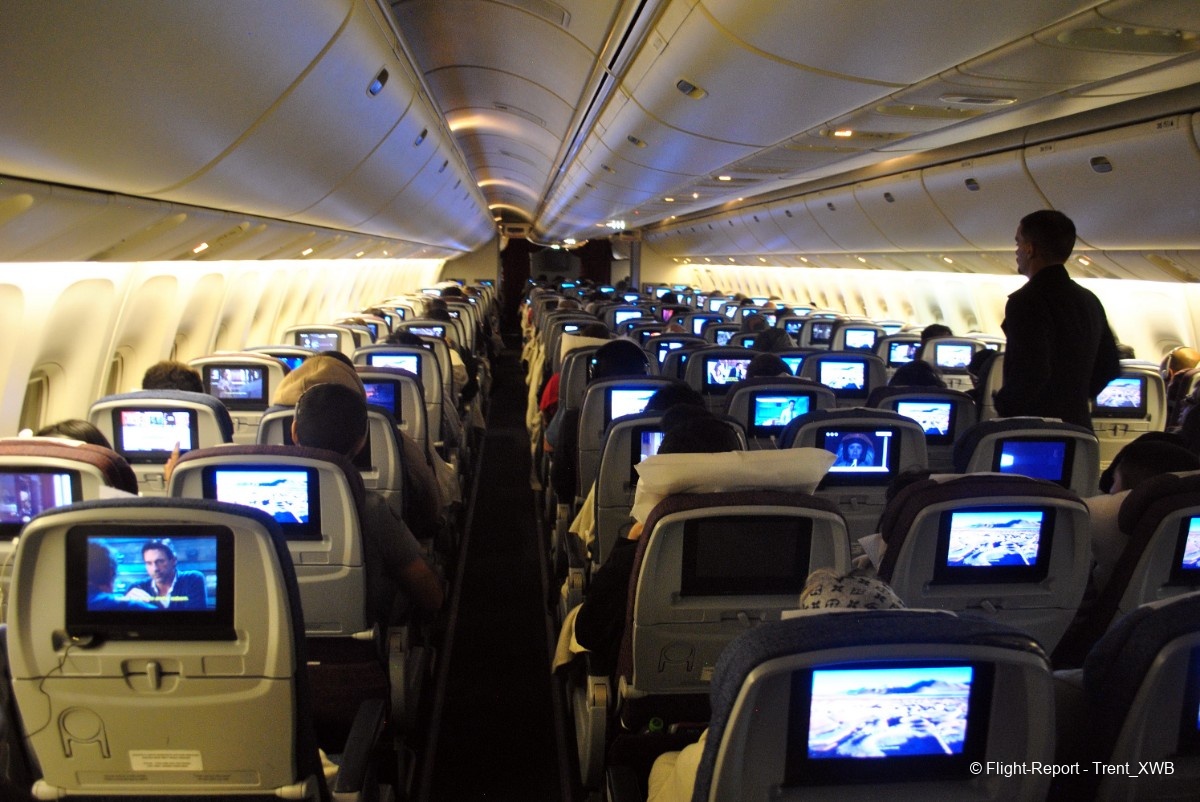
The lavatories were pretty standard.
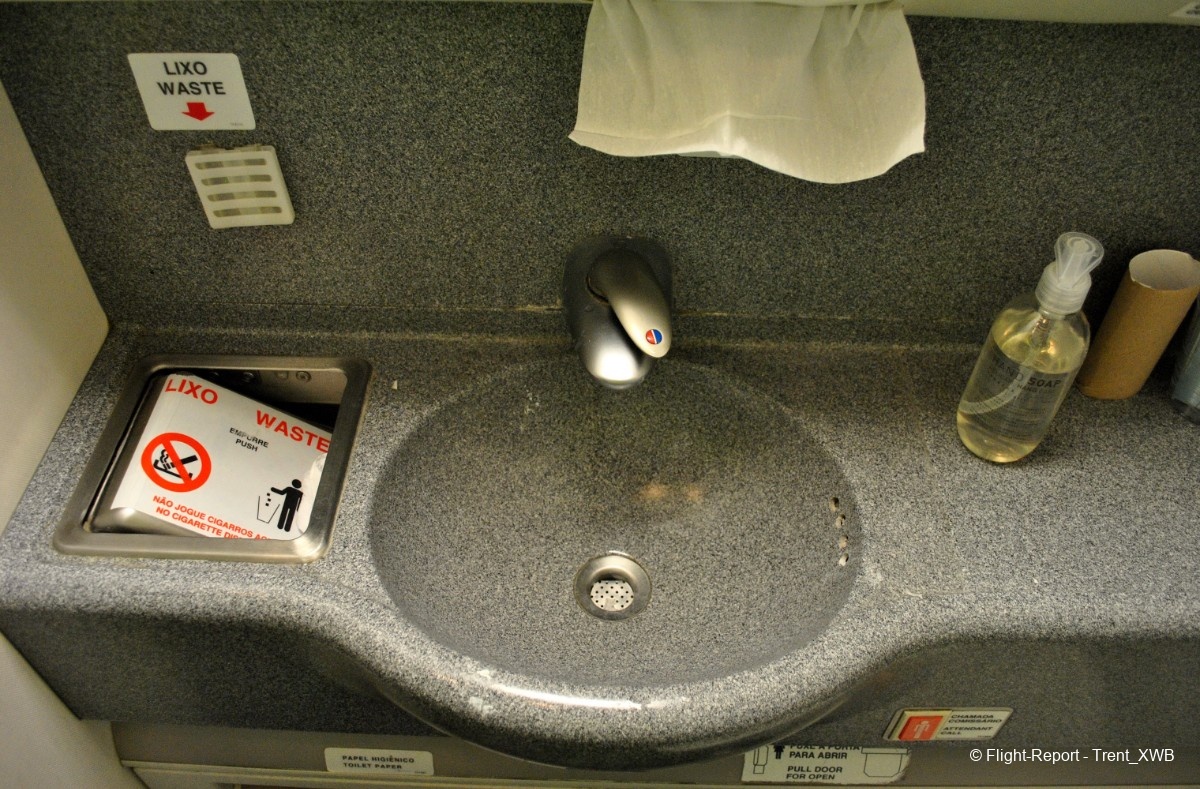
Before the flight I chose gluten-free meal on LATAM website. First GFML turned to be an excellent steak with metallic cutlery and wine in glass. Very high level! The crew were very friendly, as always on Brazilian airlines flights.
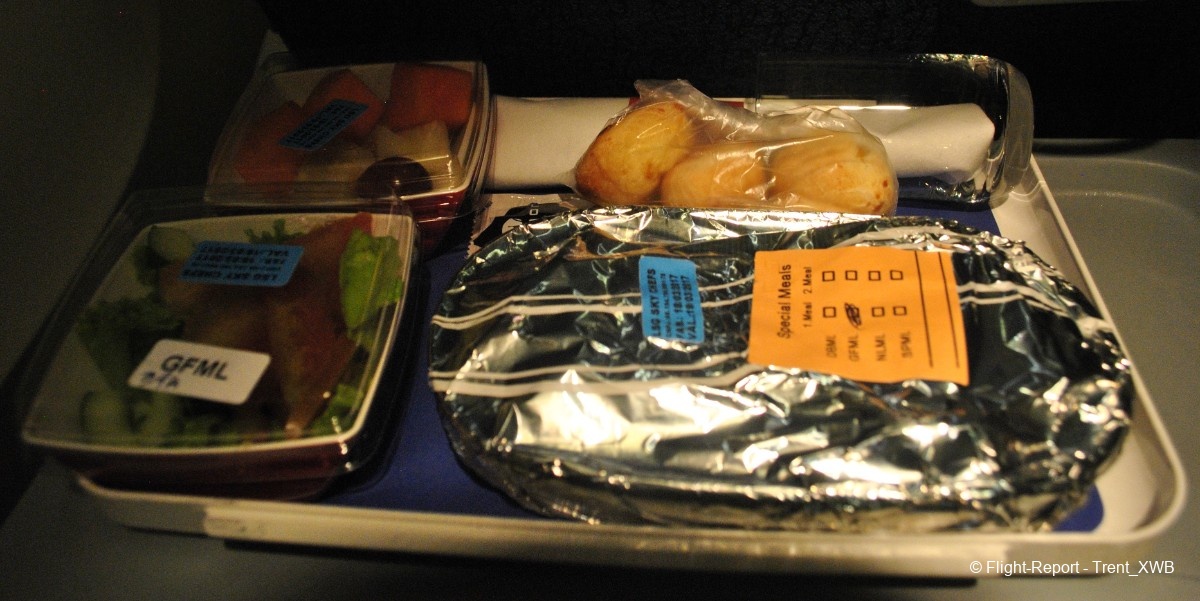
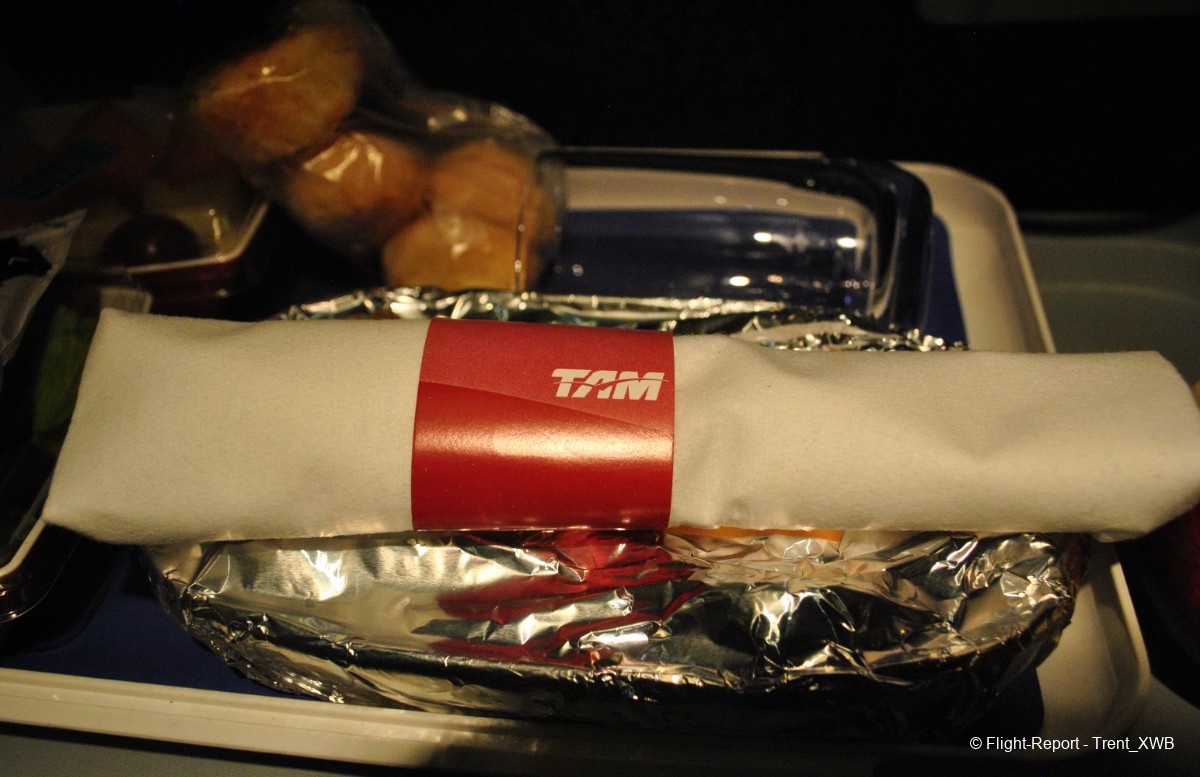
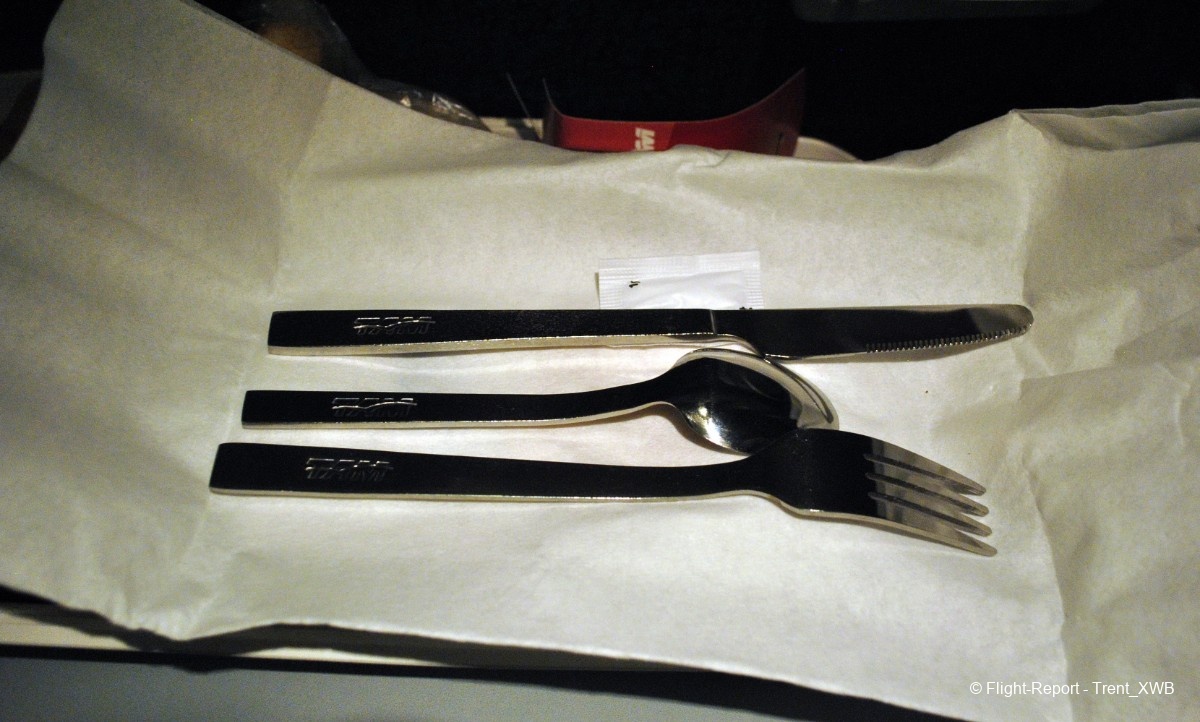
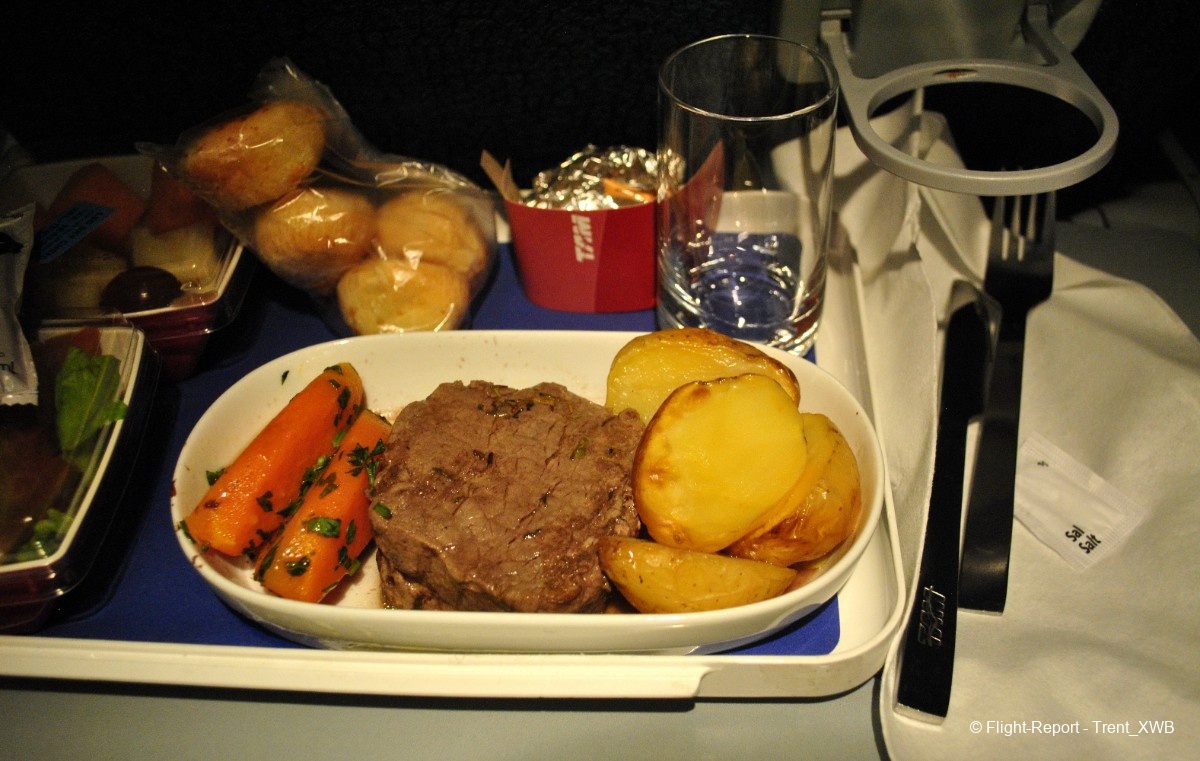
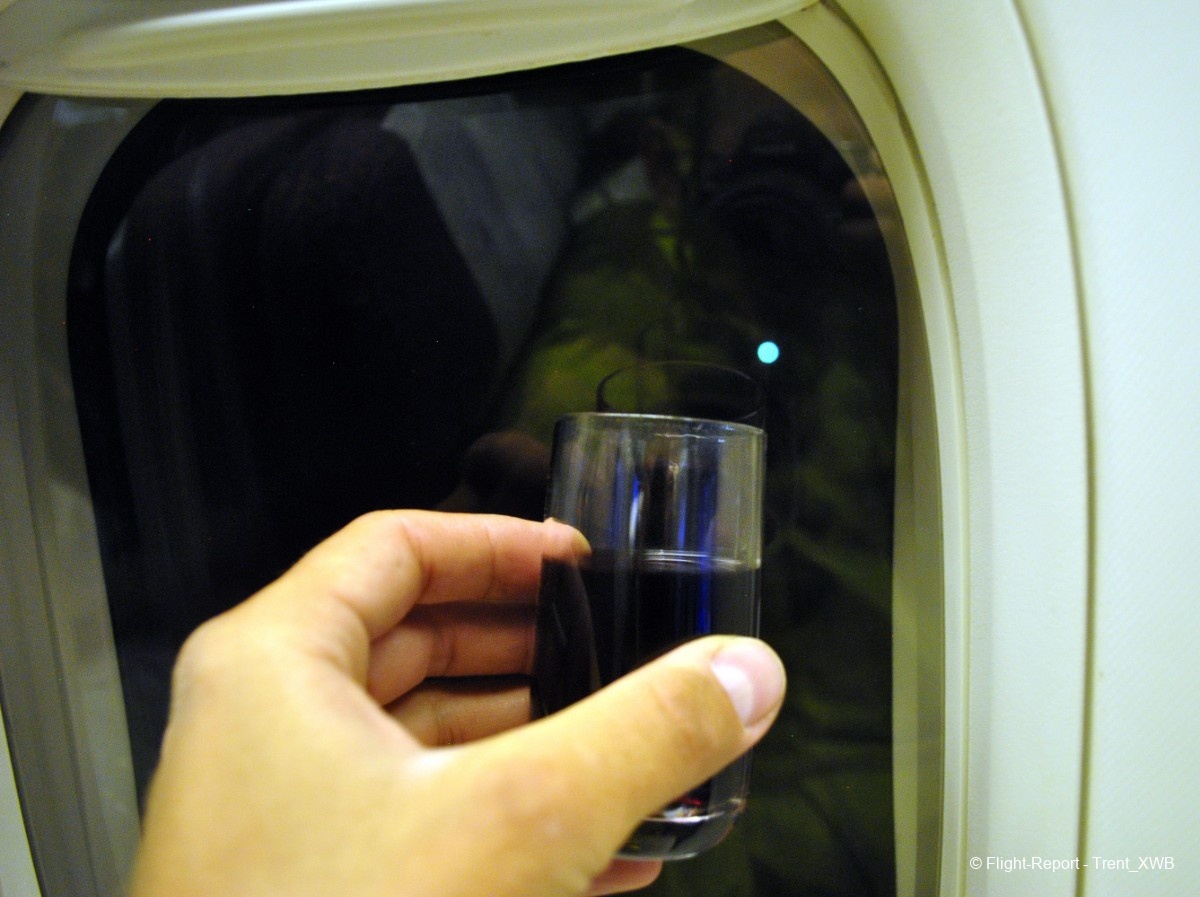
Then I went to sleep until the sunrise. The sun rose when we were approaching Africa.
B763 wing over Sahara desert.
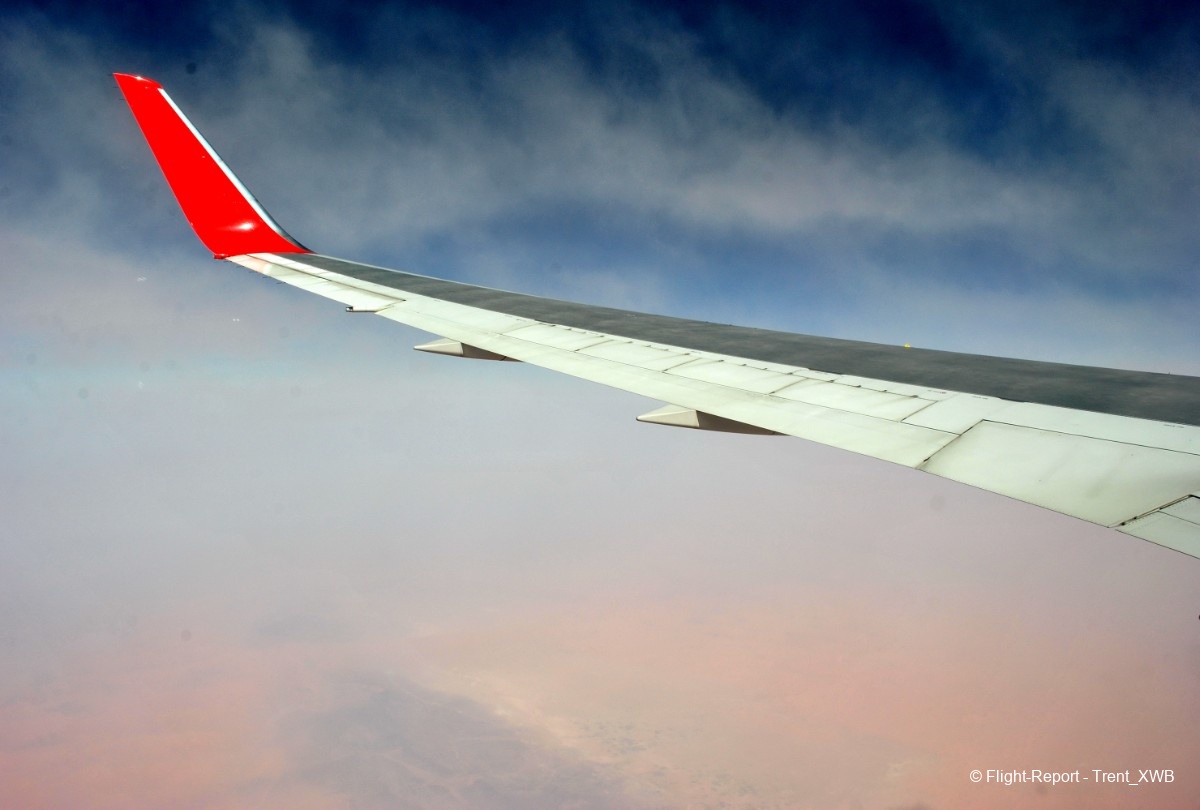
The breakfast was also very good: omelet with mushrooms, youghurt, fruit salat and cakes. The cutlery was also metallic.
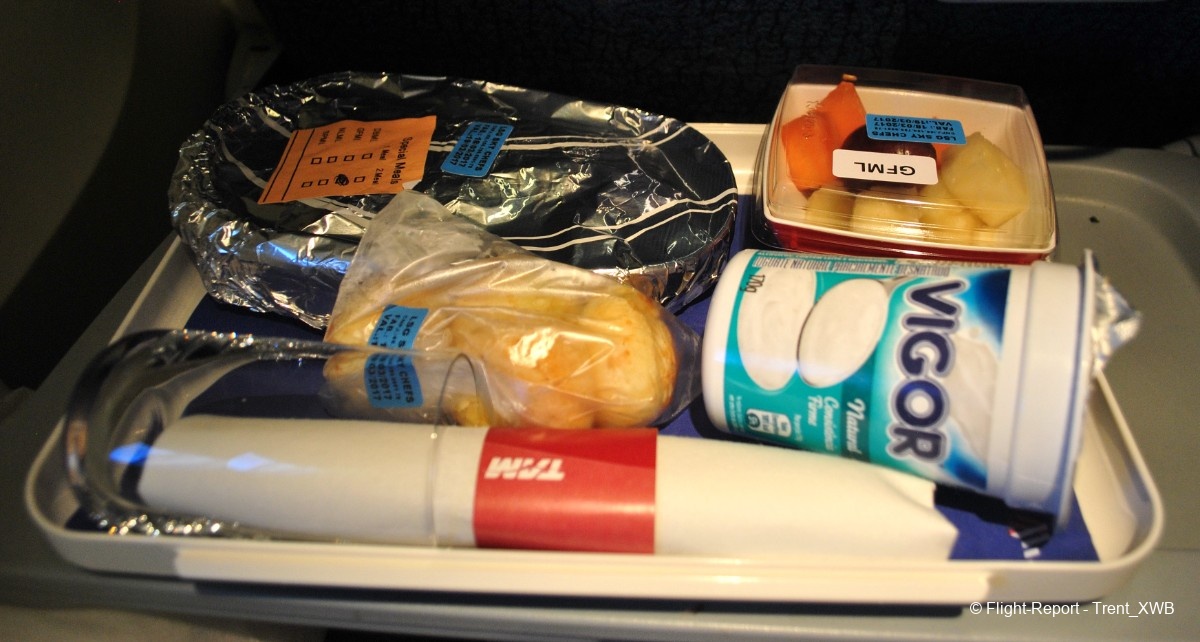
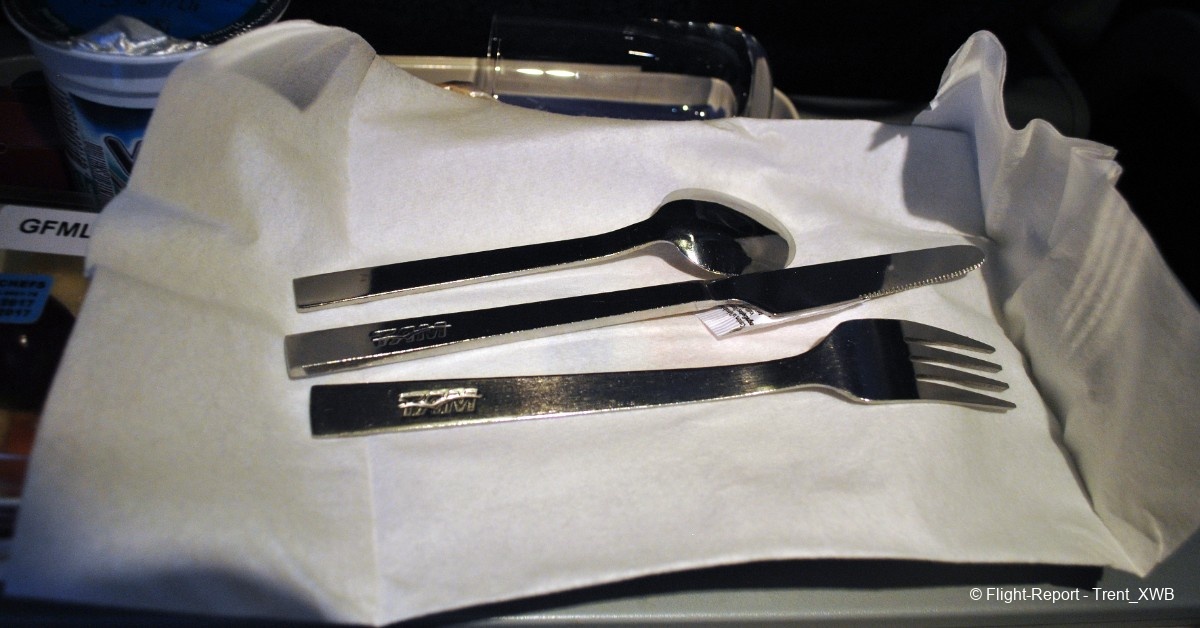

Some economy cabin views in daylight.
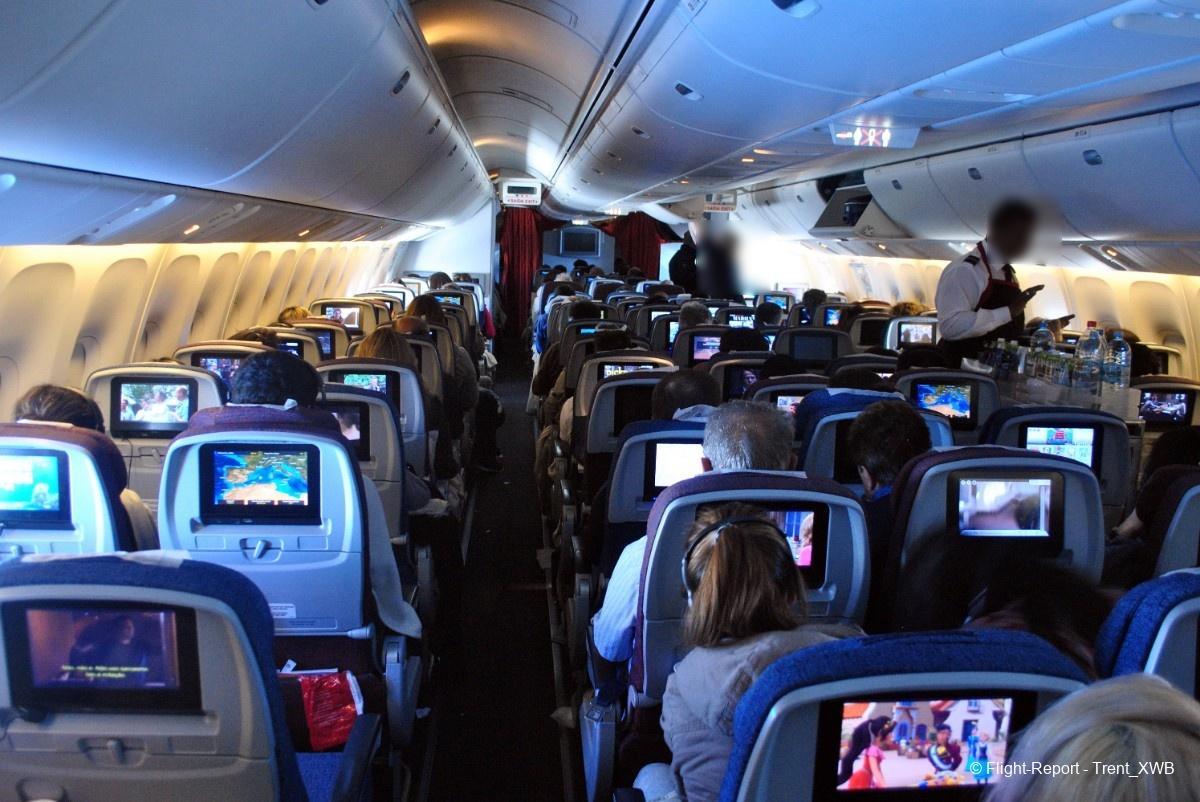
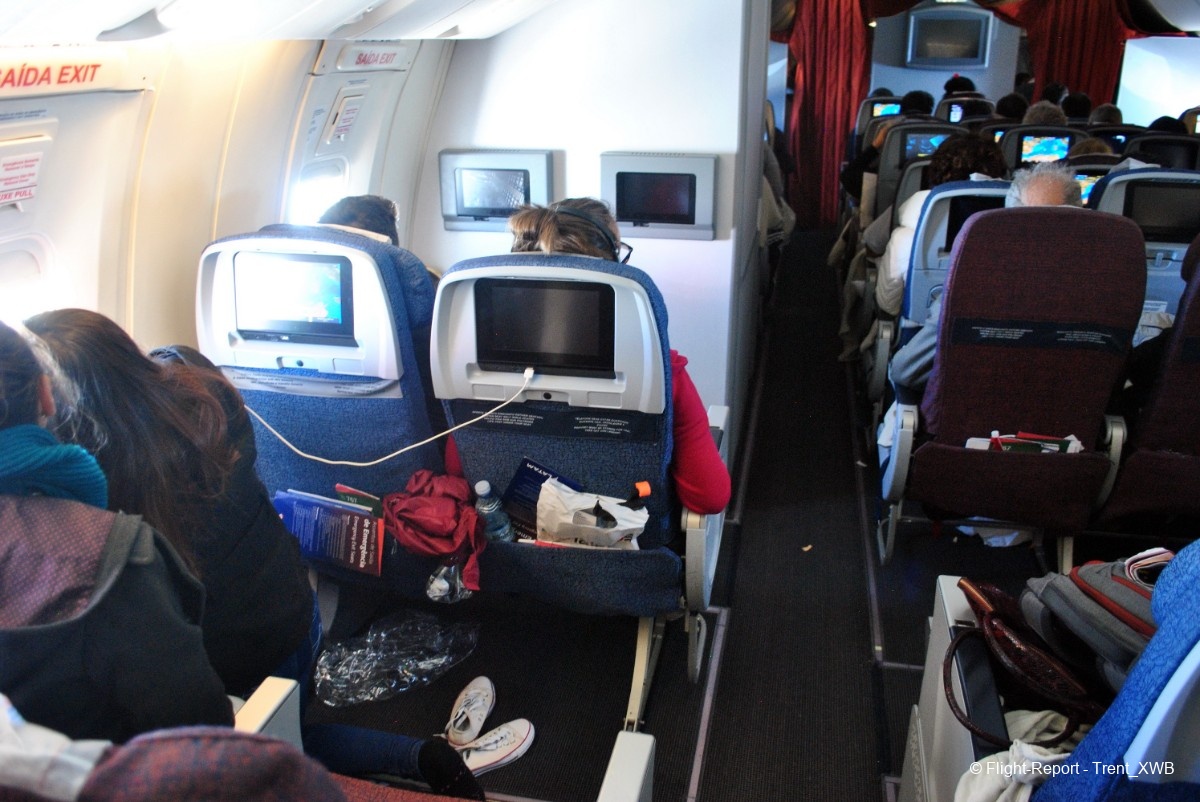
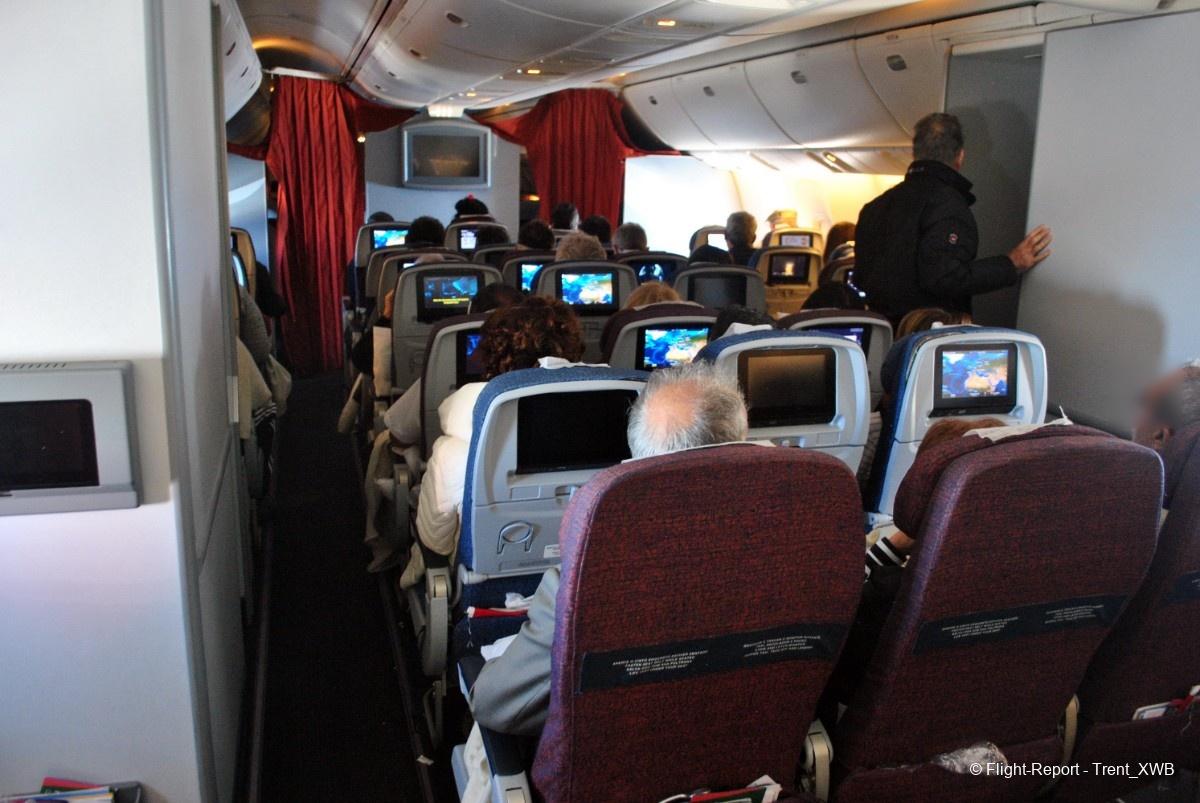
The 2L door. B763s with lower density (like this one) had just 2 pairs of large doors, whereas B763s with higher density has additional pair of large doors before engines. The B767 doors are unique: they slide upwards into the fuselage, thus they can never be damaged by jetbridge. Though, this technology was not used on larger widebodies (probably because their doors weight much more than B767 ones).
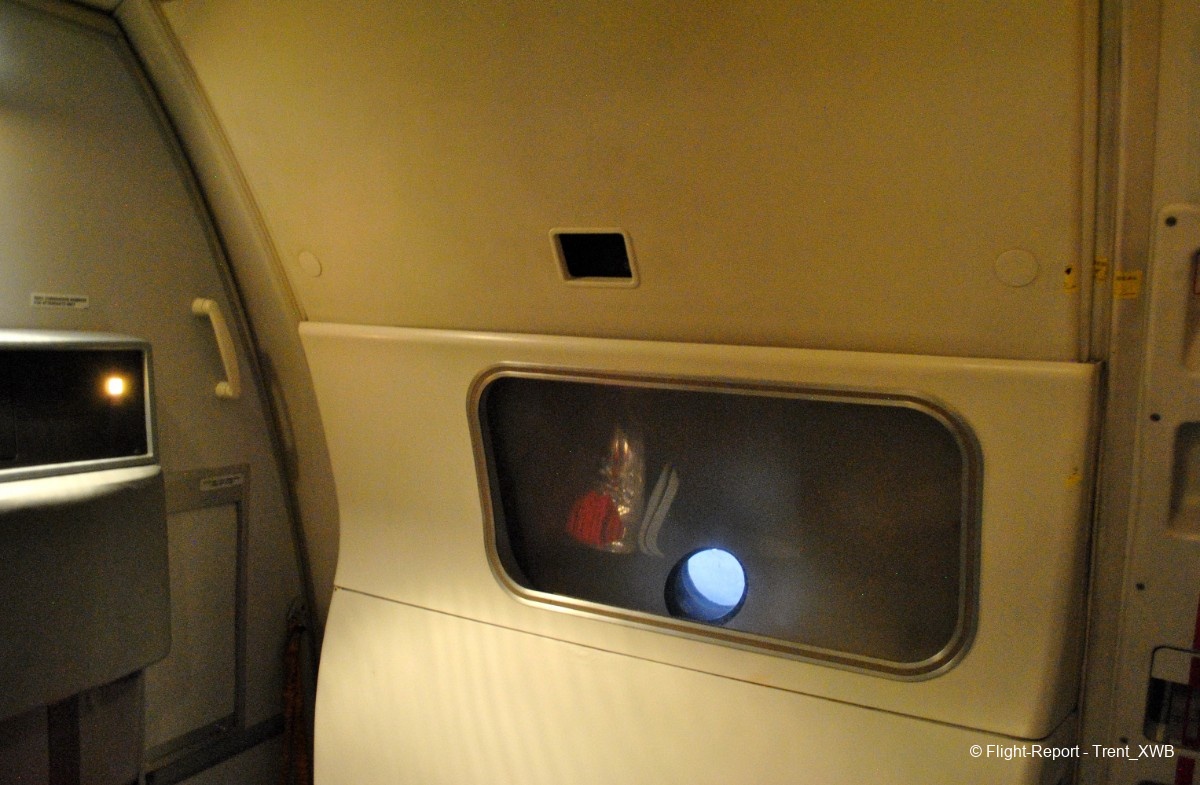
Descending over North Italy.
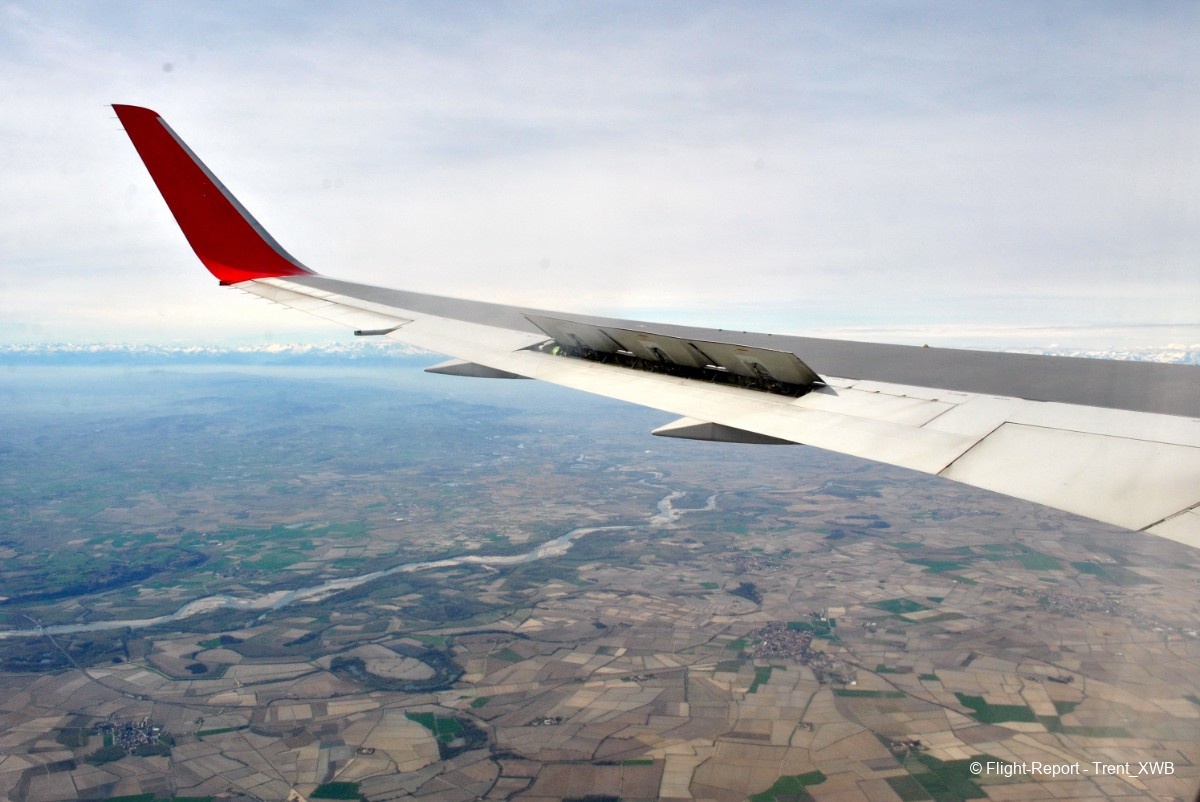
Landing in MXP with Alpes in sight.
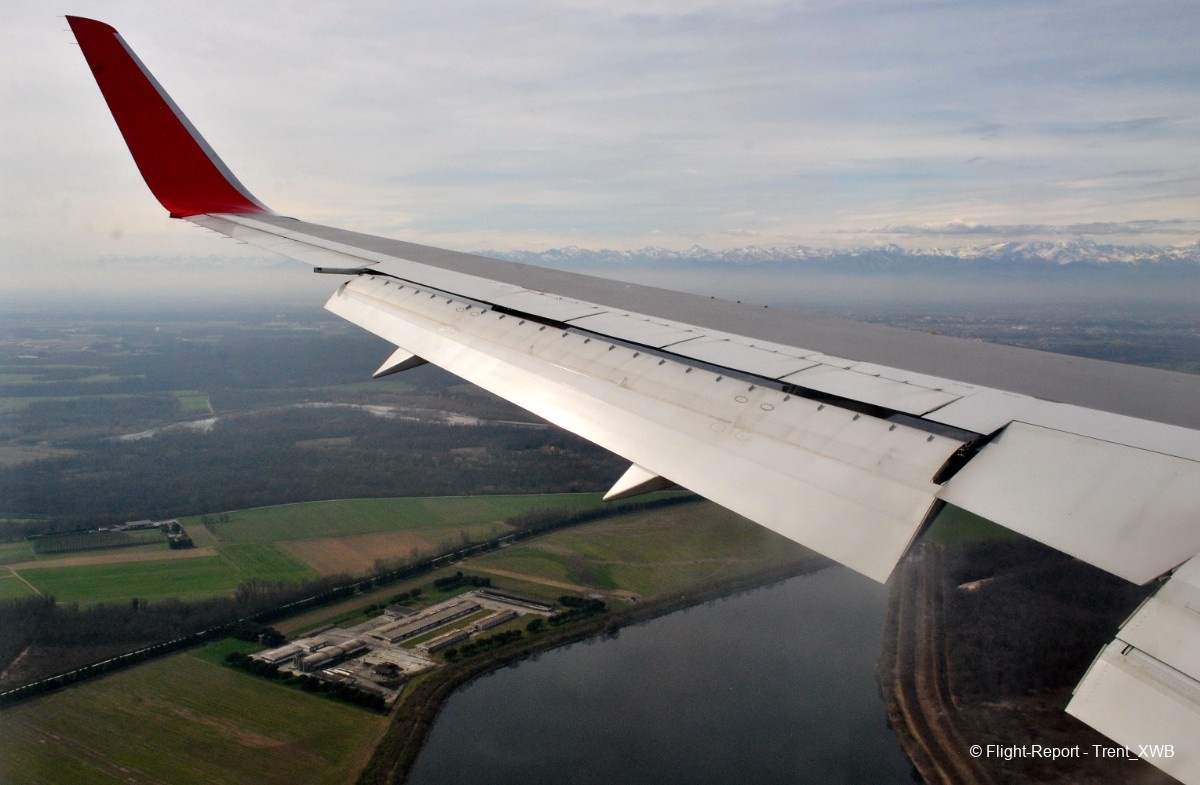
The Economy Cabin After The Flight
Some detailed views of the economy cabin upon disembarkment.
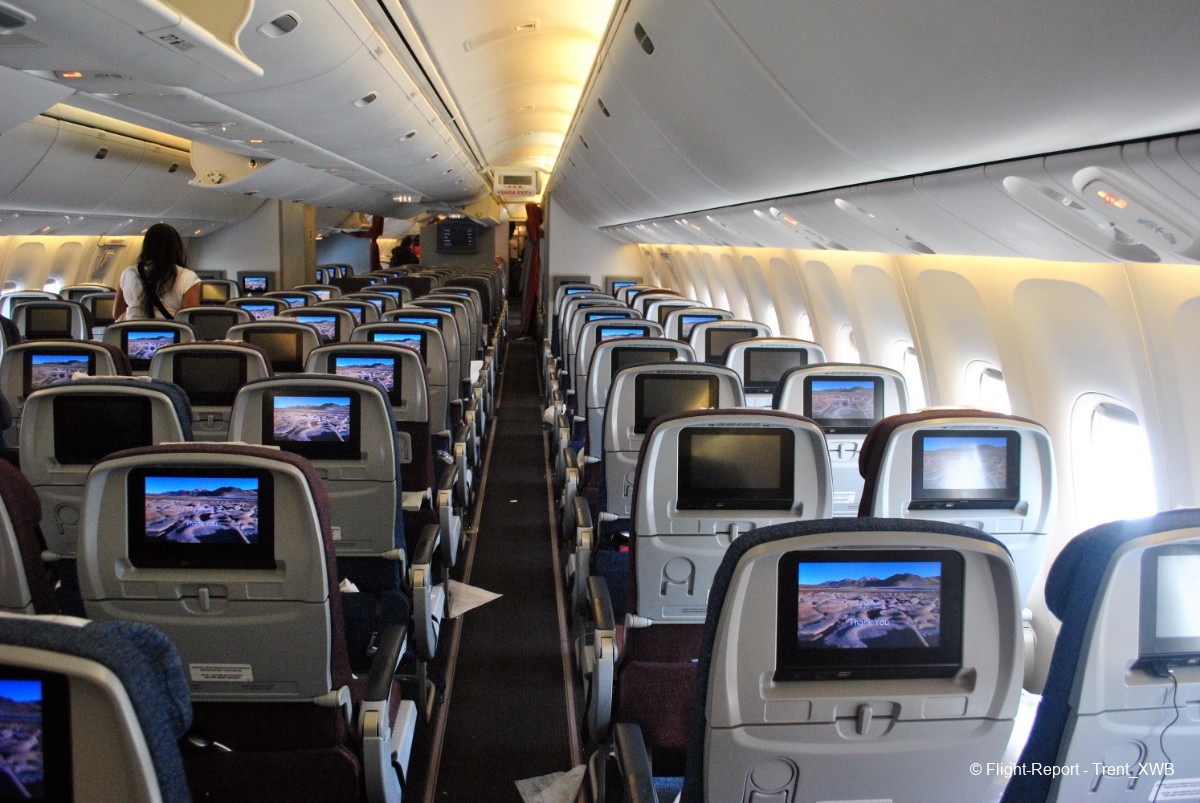
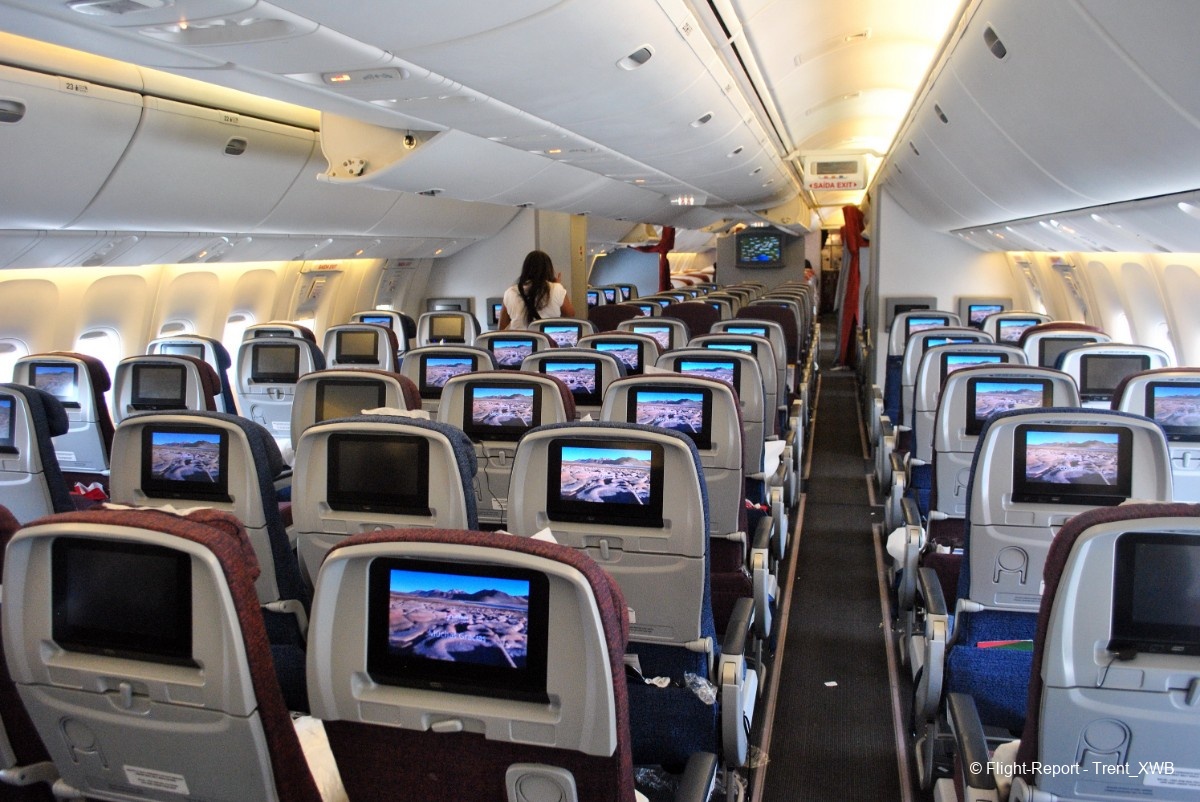
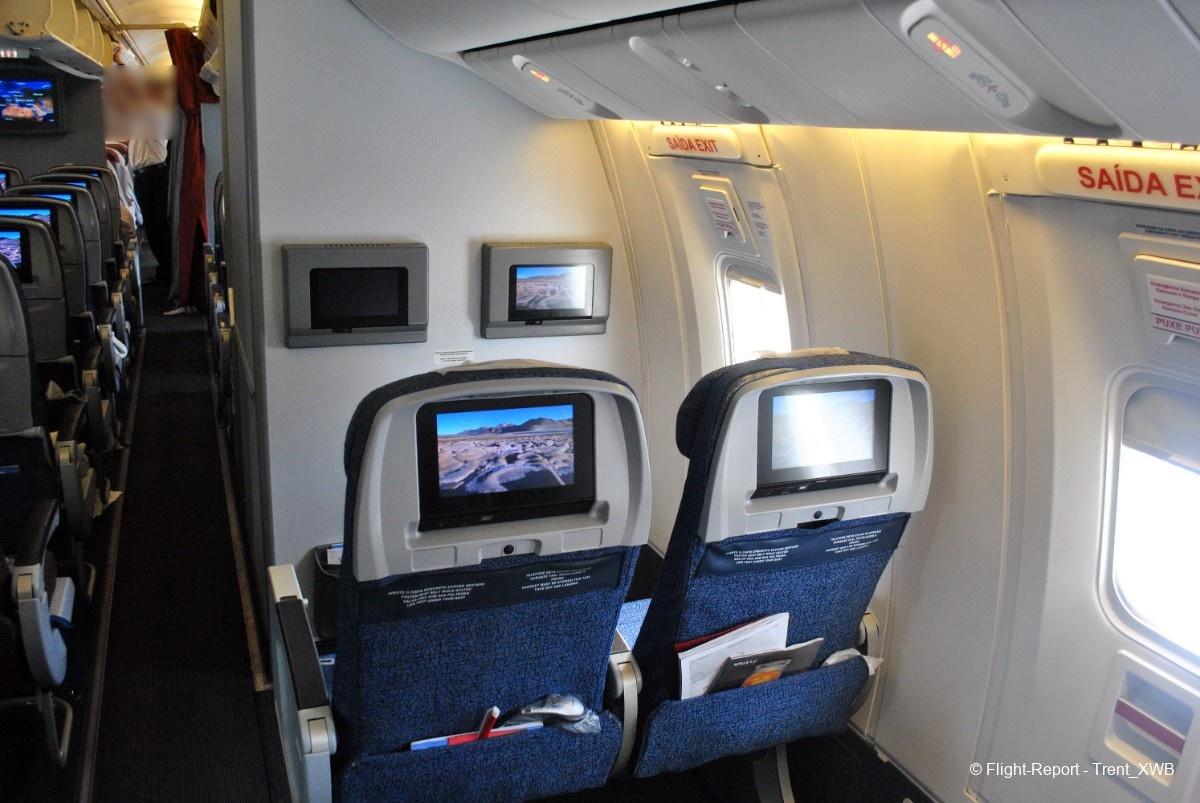
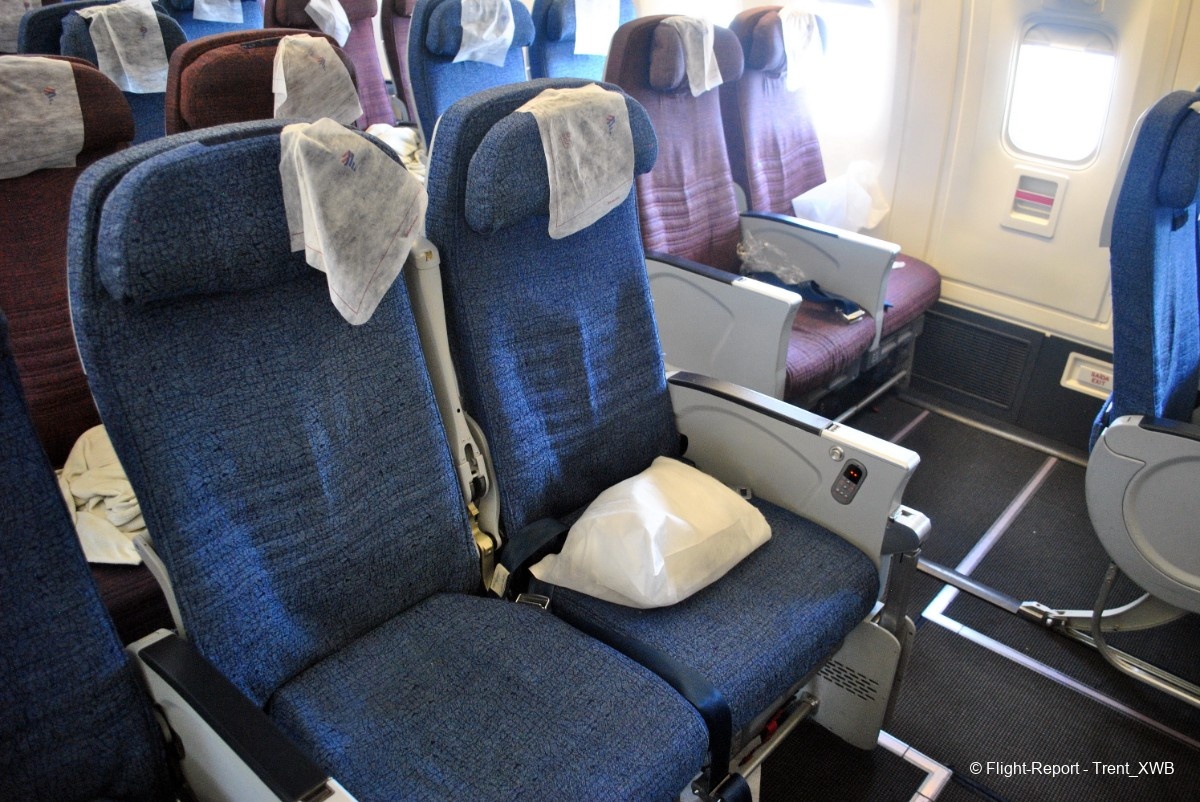
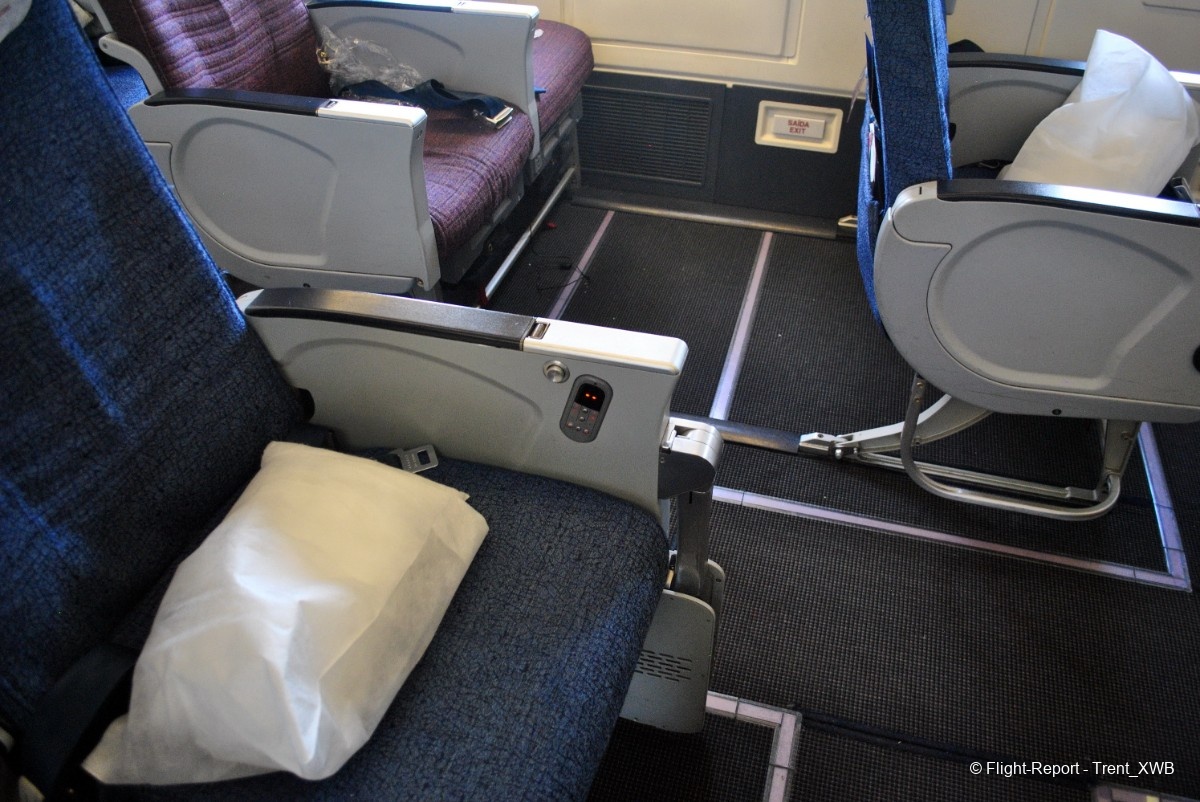
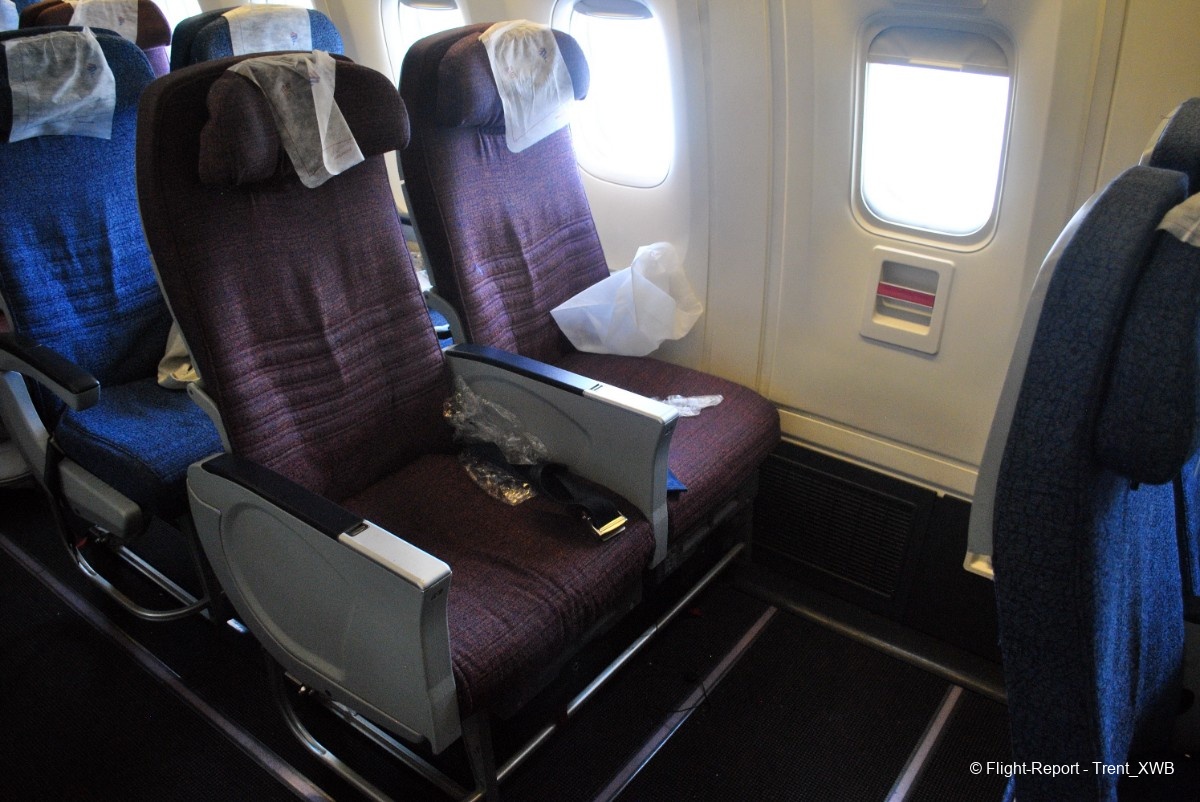
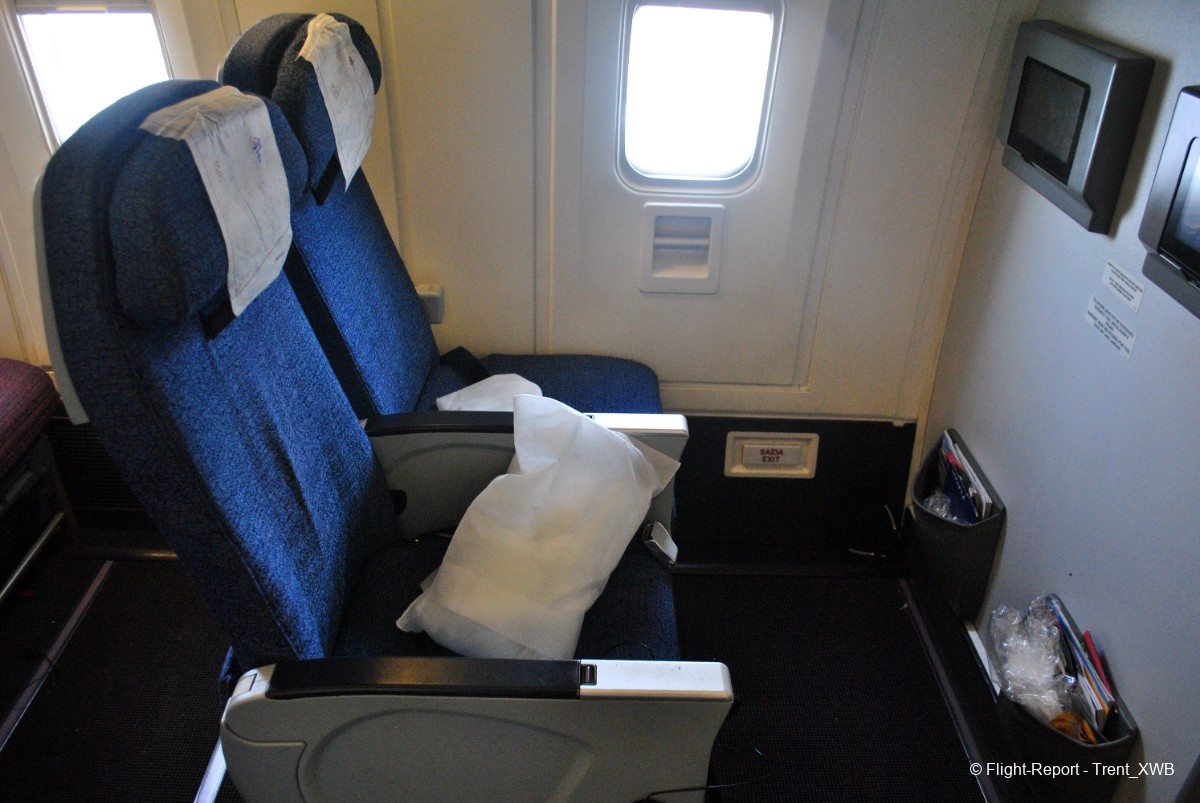
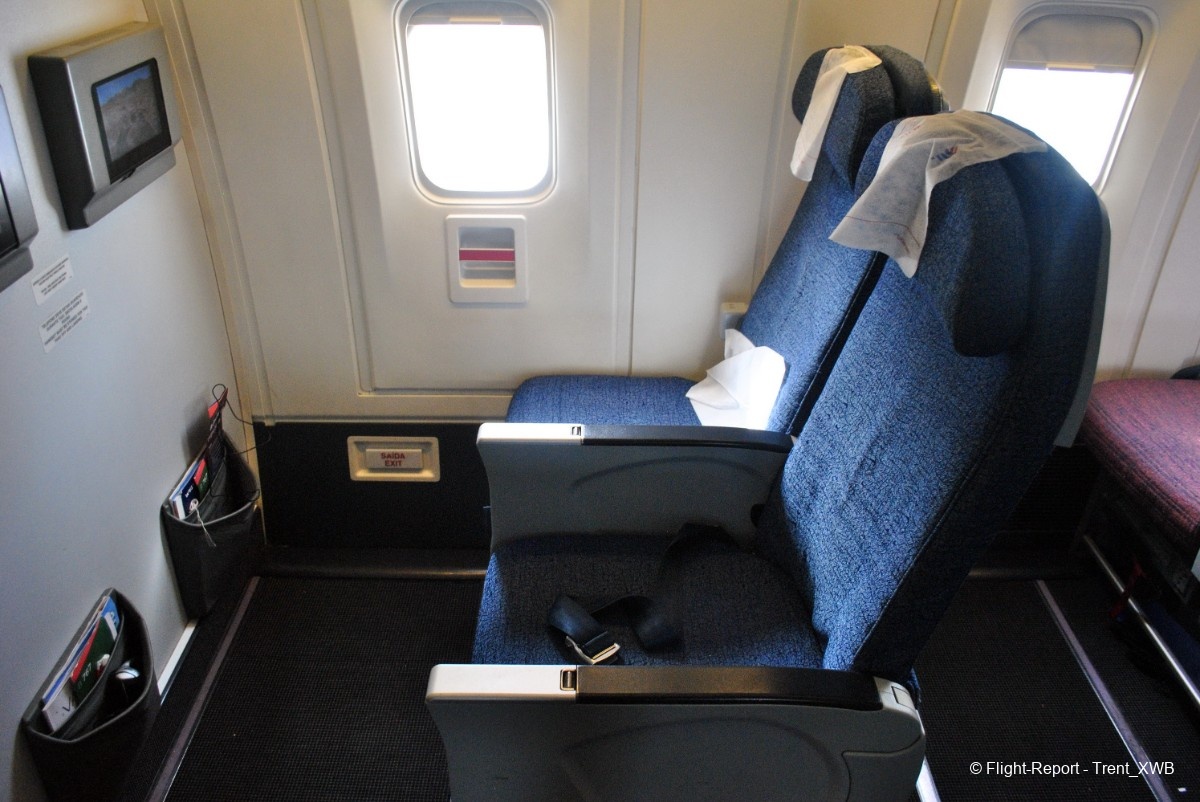
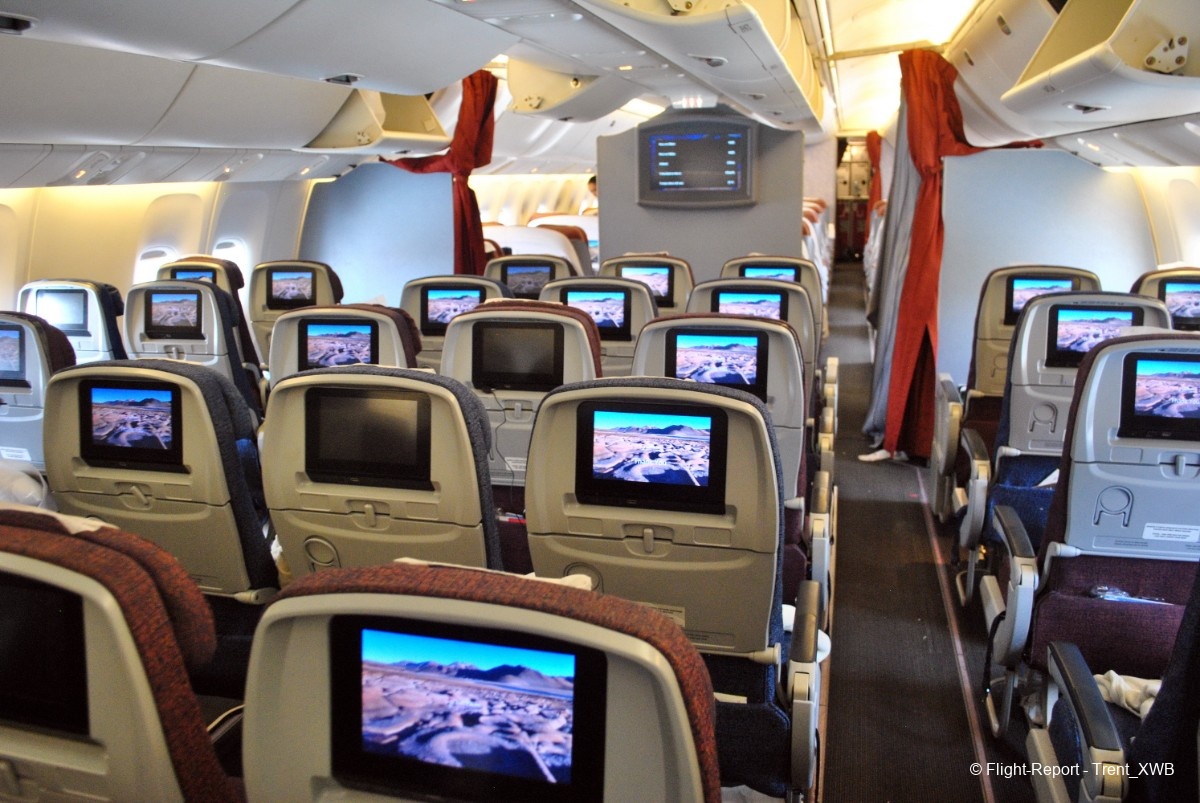
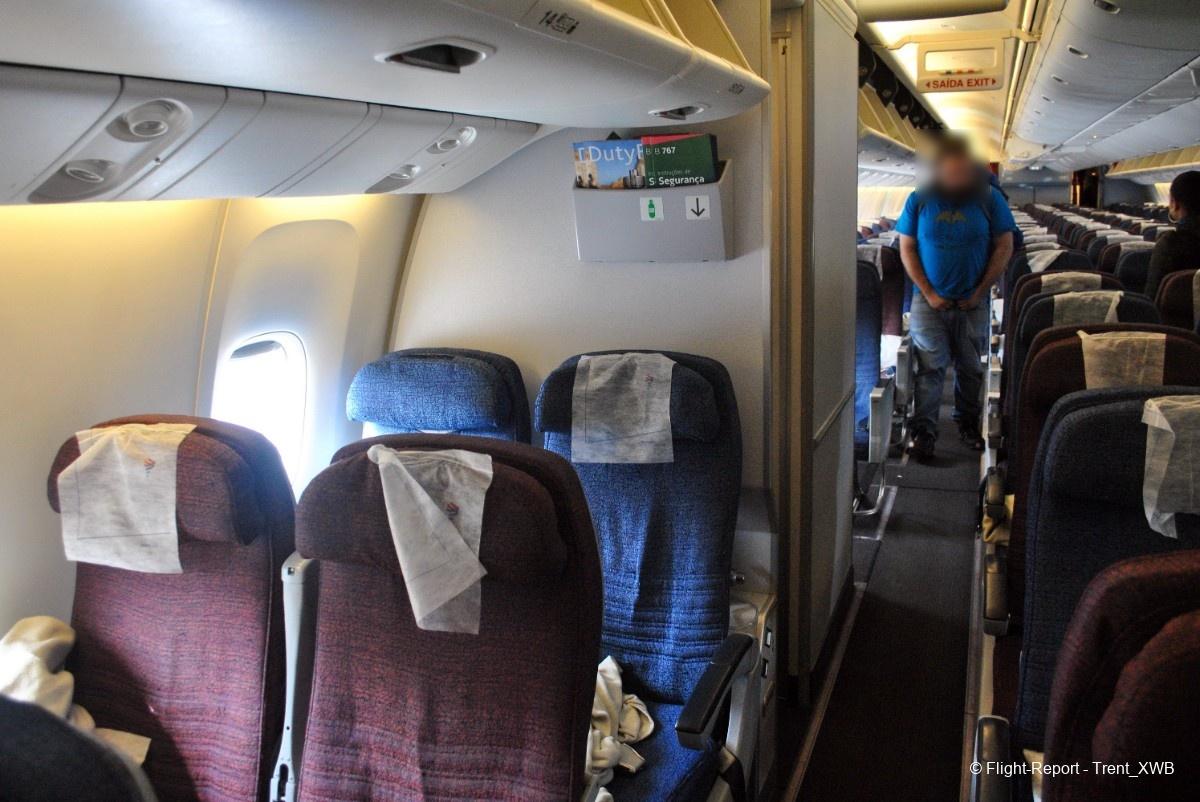
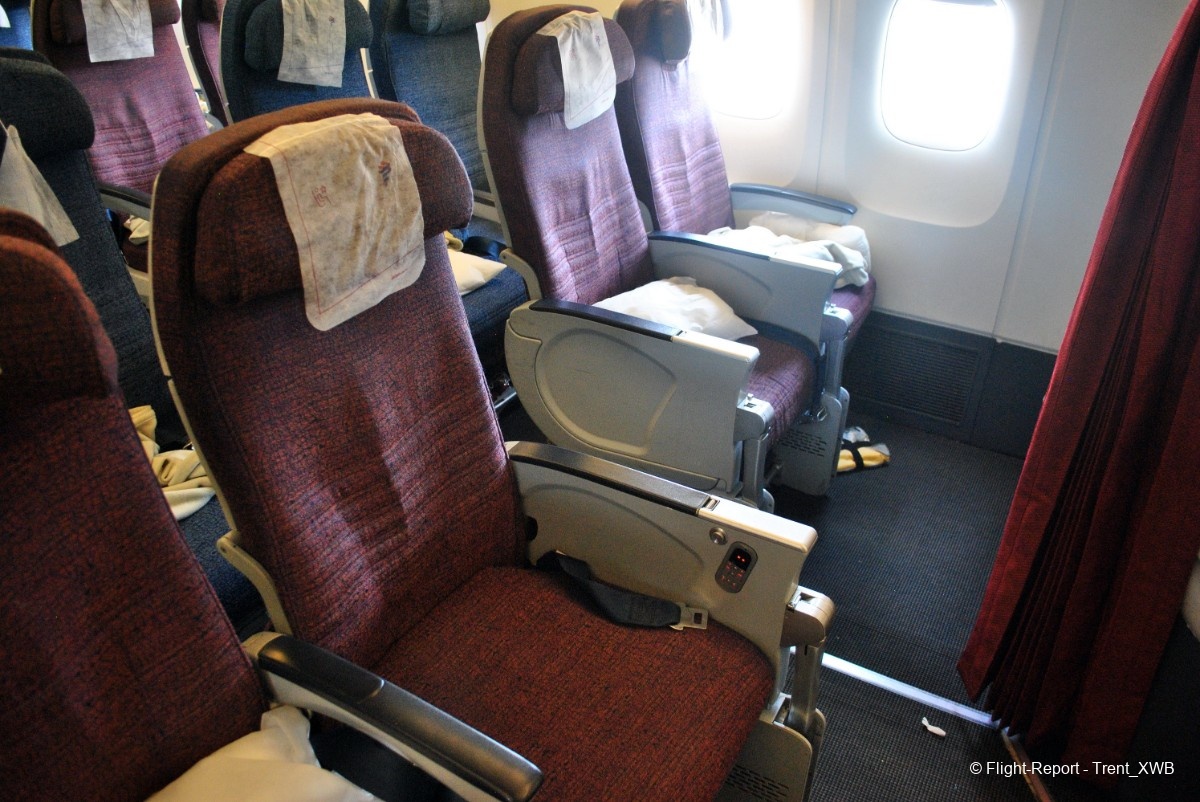
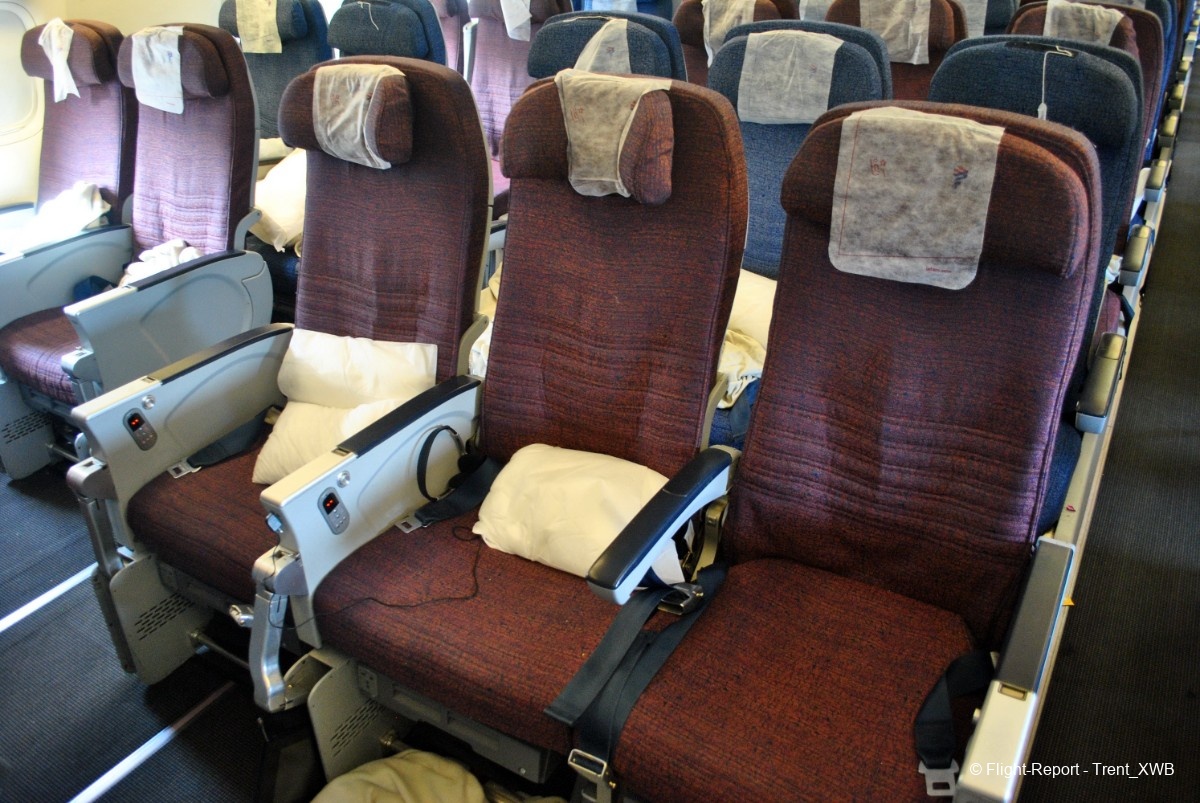
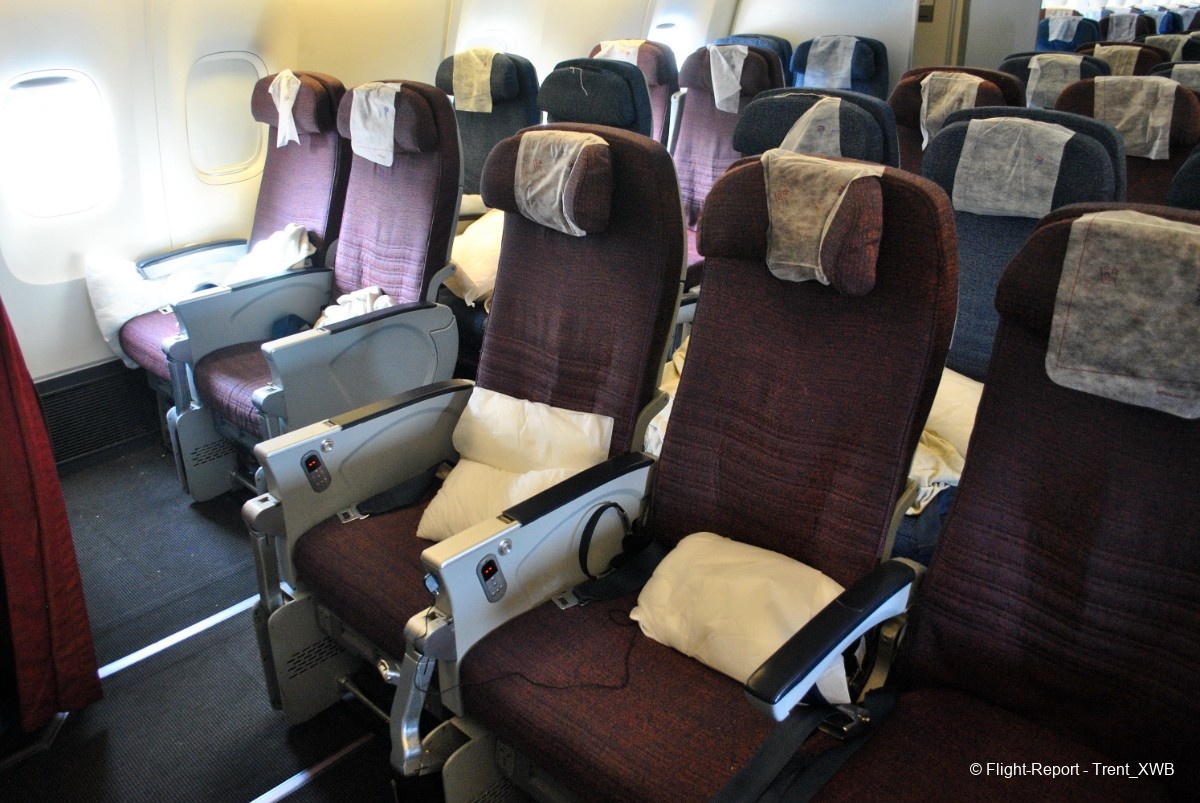
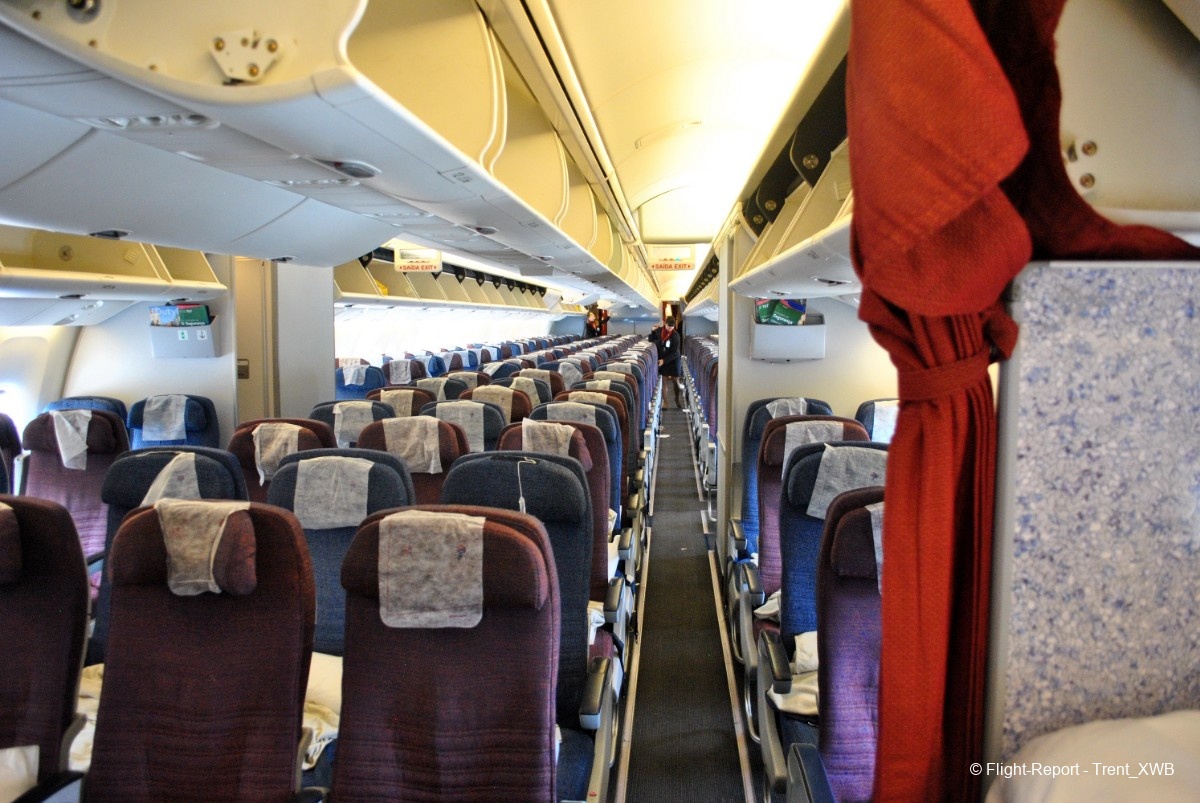
The Business Cabin After The Flight
Some views of the business class cabin upon disembarkment.
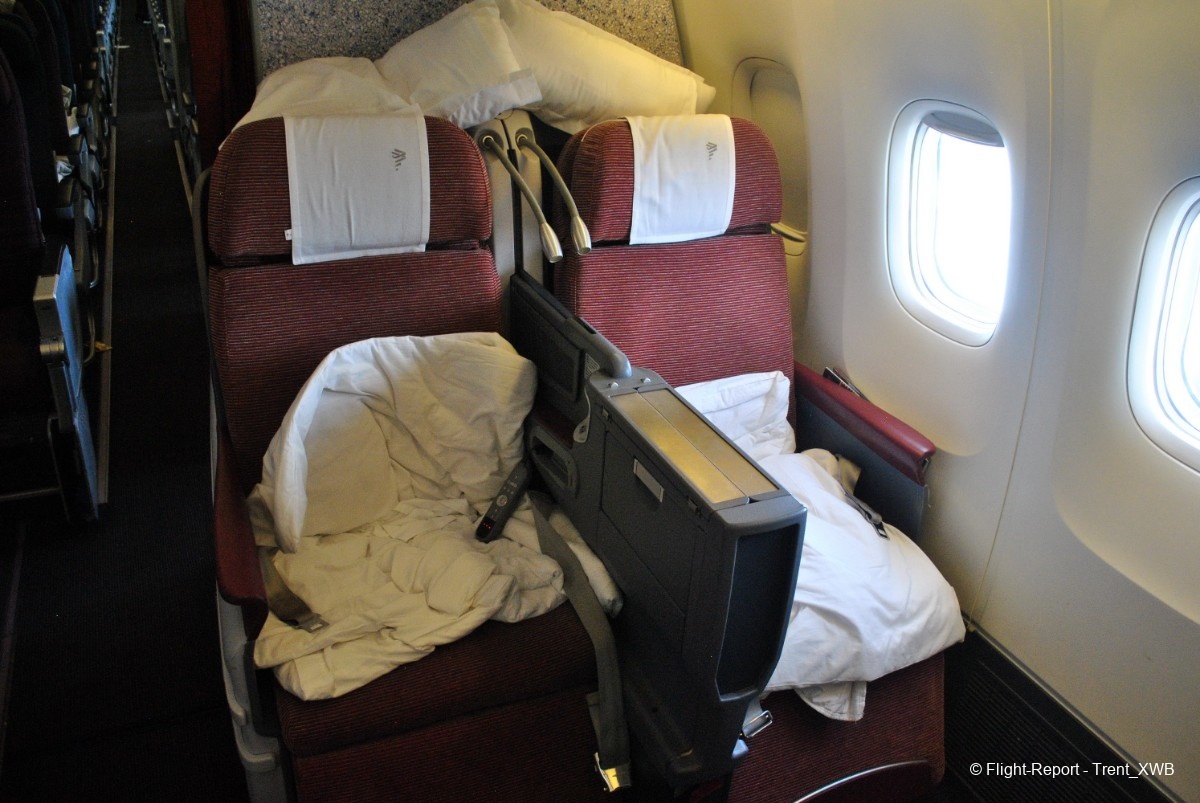
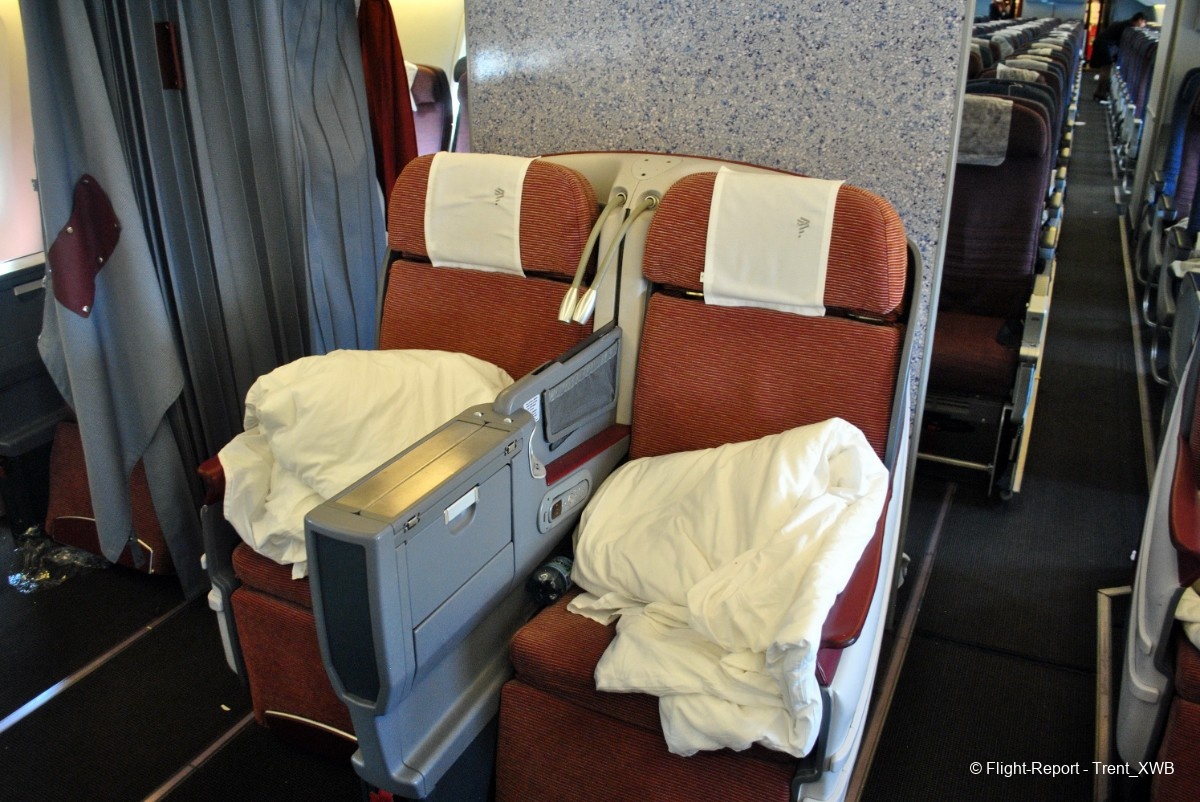
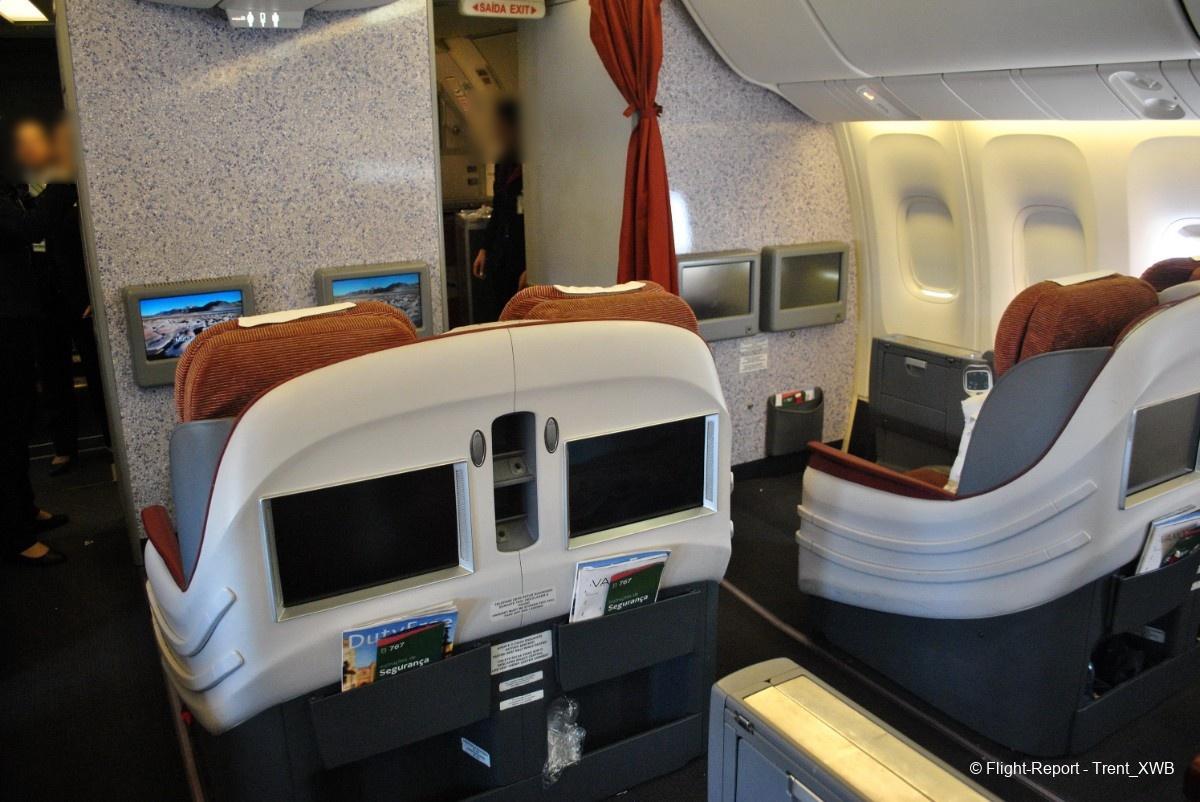
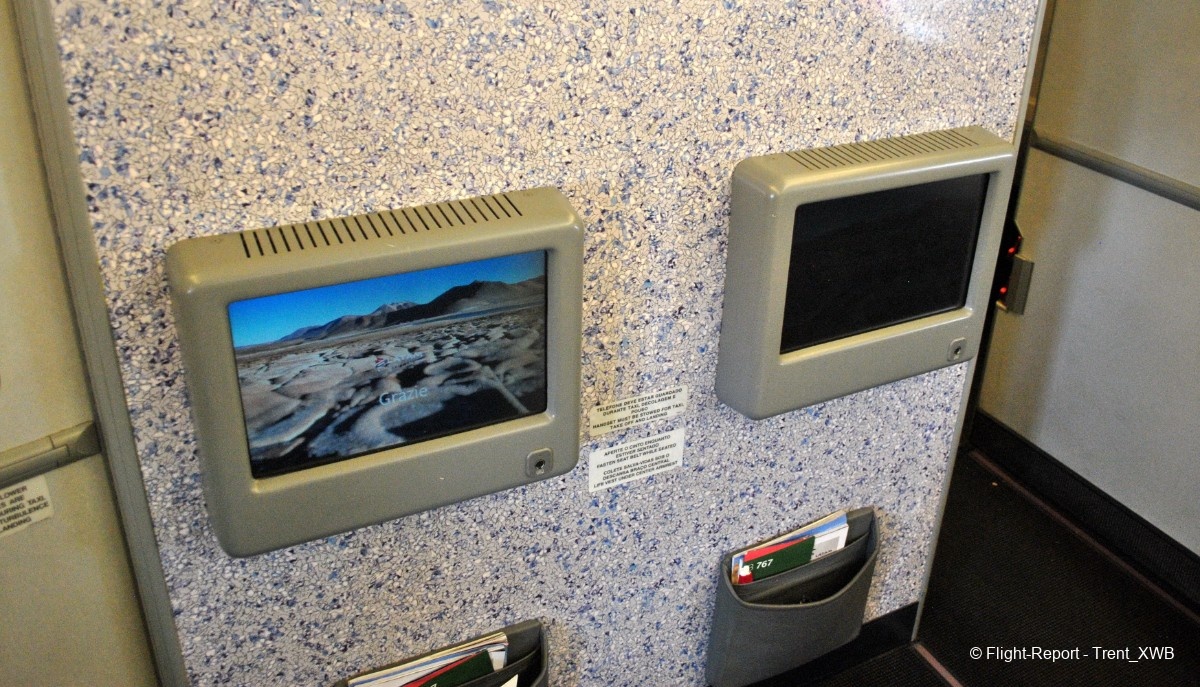
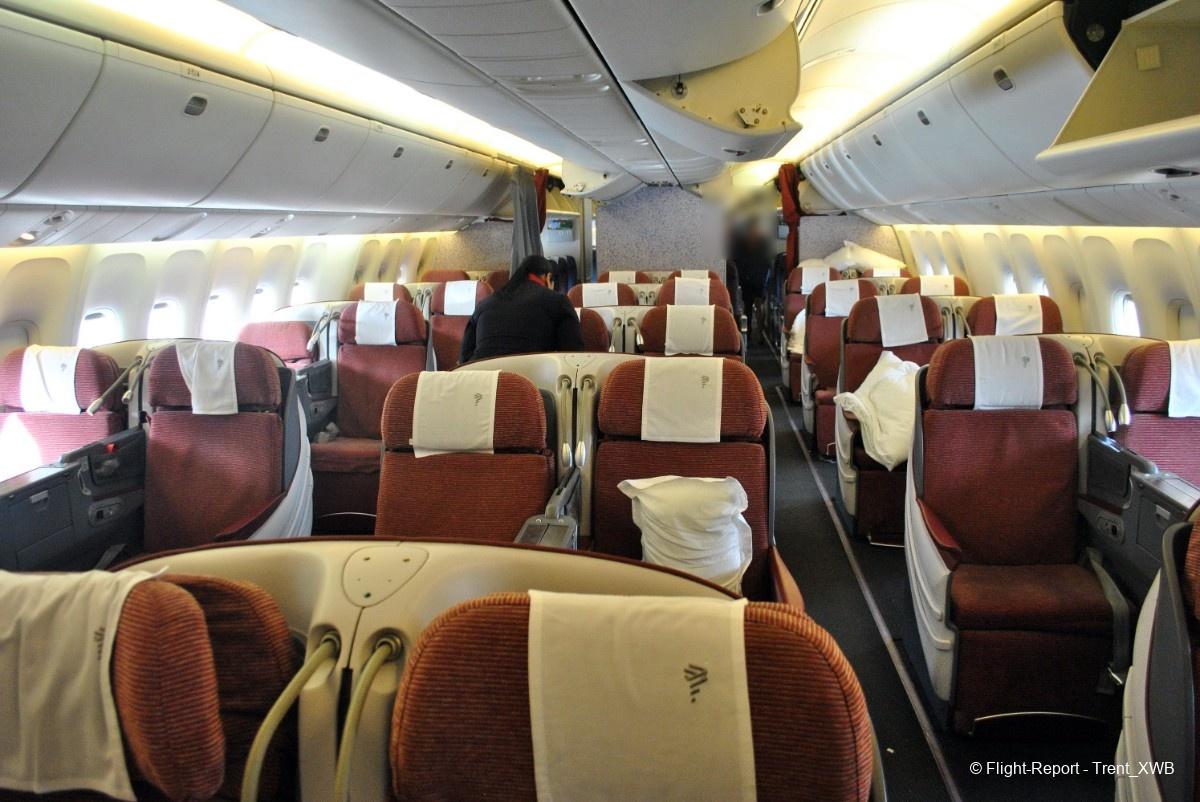
And now it's time to say adios to comfortable PT-MOE and to the friendly Brazilian crew.
The 1L door, slid upwards.
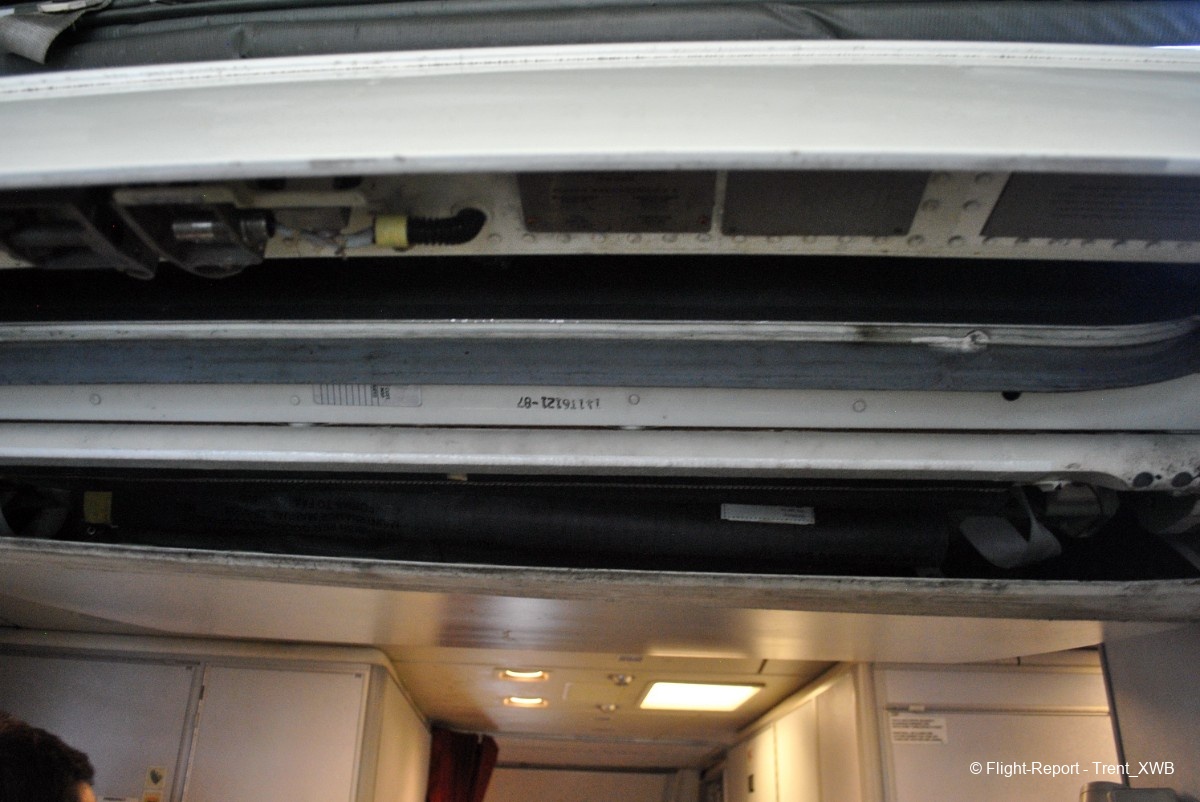
The Aircraft After The Flight
And here's the view of PT-MOE from check-in hall of T1 MXP.
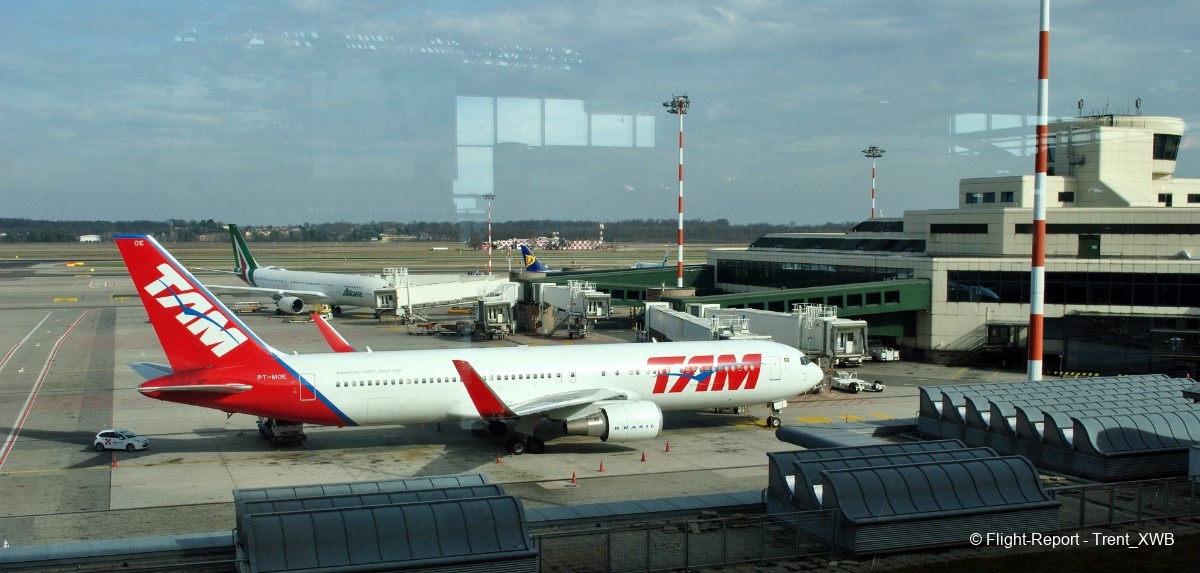
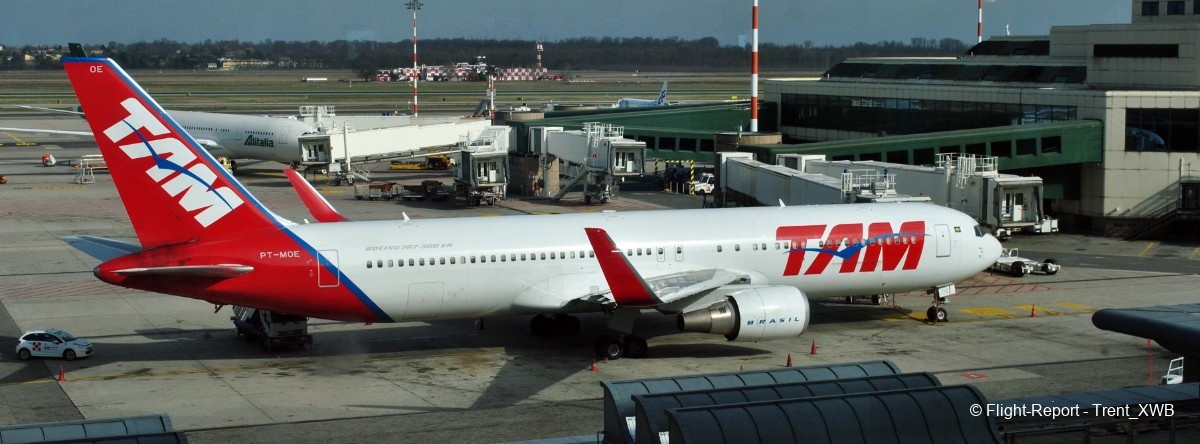
Thank you for you attention and see you in the next FRs!
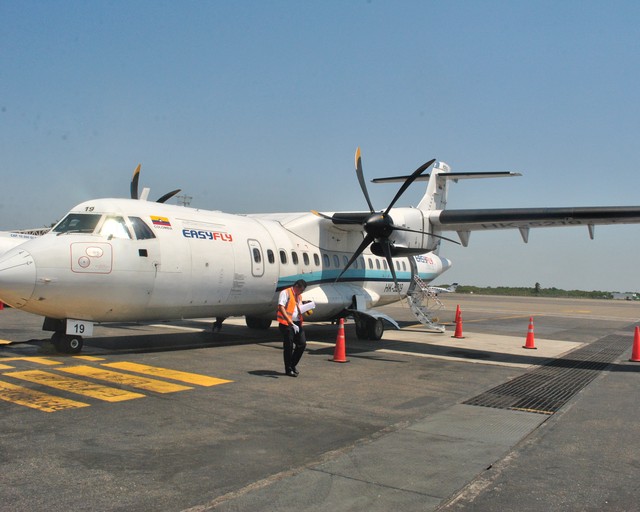
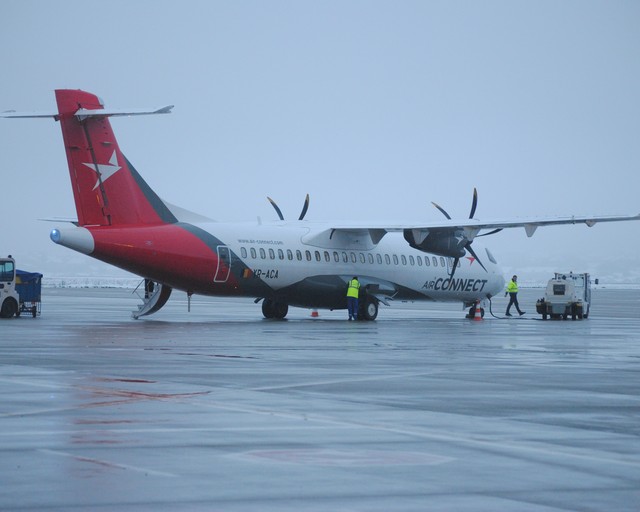
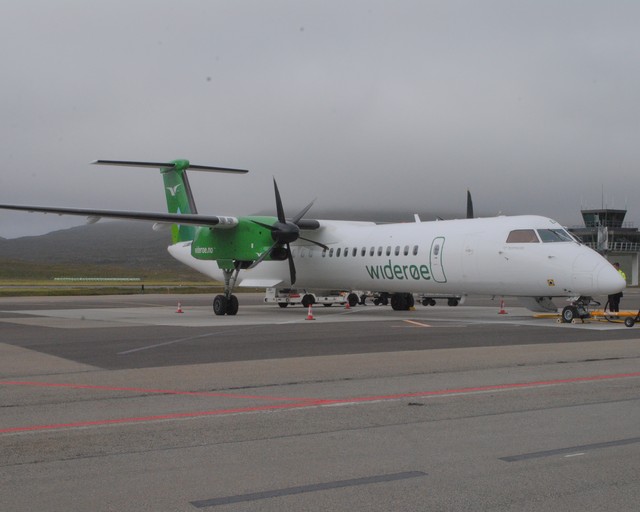
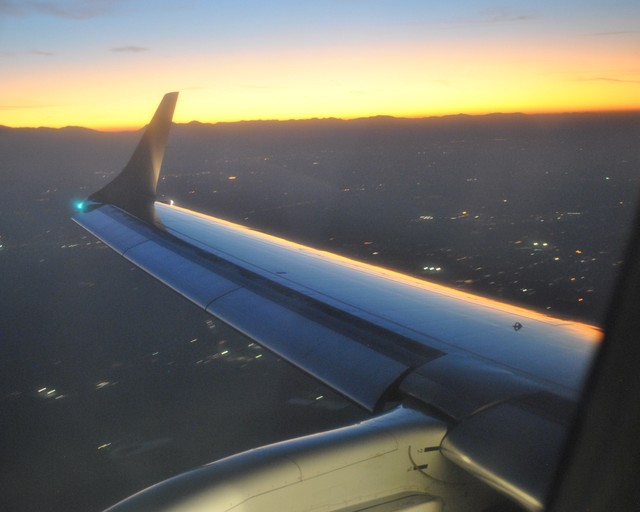
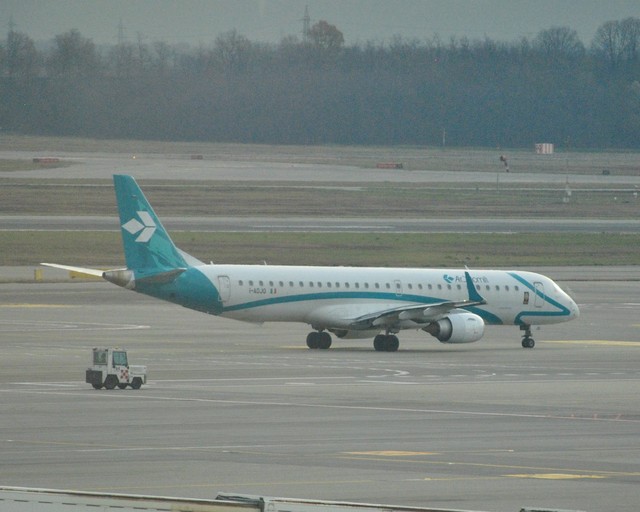
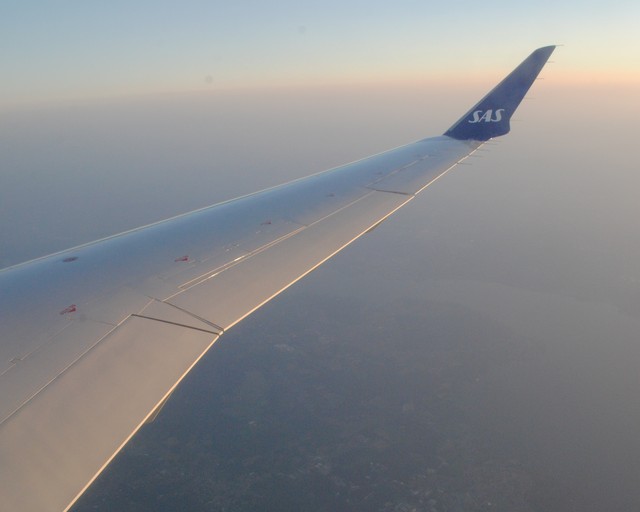

I would fly one of those 763s over a 787 or a A350 anytime. It's such a shame to see them go. LA had great catering back then, I don't know how is it after the Covid hiatus.
Thanks for sharing!
Thanks for the comment! BTW, ex-JJ A359s were excellent in economy, having Safran Z300 seats (I guess, 18" wide). Those Y passengers of DL or WK, who get these birds on their long haul flights, are lucky.
Very interesting report with plenty of useful info about the B767s still in service (may I suggest to add Jordan Aviation B762 JY-JAL sometimes operating their scheduled services from/to AMM, but very unpredictable). Having personally logged 95 different airlines with the 767 (plus hopefully one more this week with MIAT from UBN to ICN…) I’m targeting to reach 100 of them during the coming months/years. Do you have additional info about Eastern B762 or B763 status, I mean how to book them and on which routes ? I haven’t seen any possibility since they stopped their sole scheduled (once-monthly) flight between Miami and Santo Domingo two years ago, unfortunately too late for me to react. Thanks in advance for the answer and thanks again for this superb FR.
Hi, Luke!
Thanks for the comment! Your mission to fly as much as possible 767 airlines is great and deserves a lot of respect!
Thanks for the notice of Jordan Aviation's B762. Maybe, I'll even try it one day (on the other side, Zimbabwe, albeit being much farther from EU, looks more temptating due to presence of a B732 along with B762).
Concerning Eastern B763s and B762s, they doesn't seem to be active now. I remember, when I was in GYE (waiting for KLM flight to AMS) in March 2020 before COVID, I saw an Eastern B762 there.